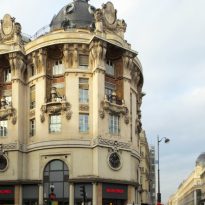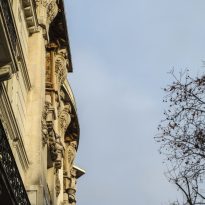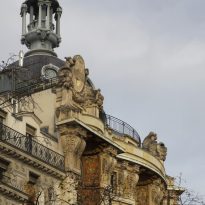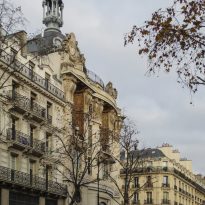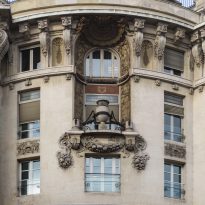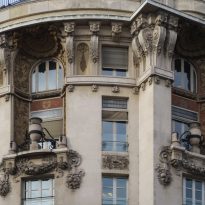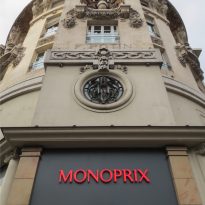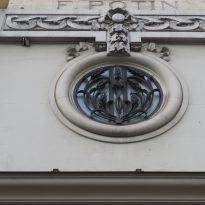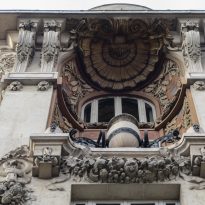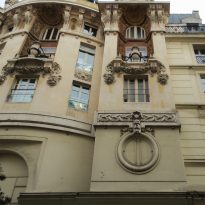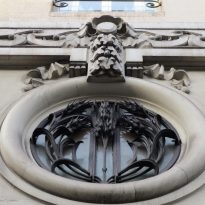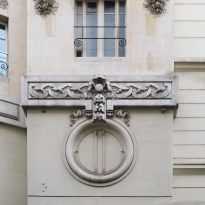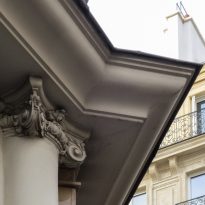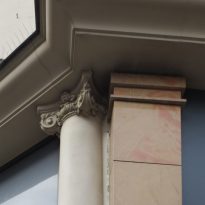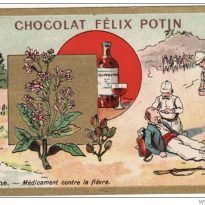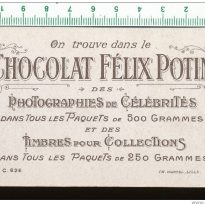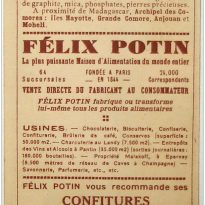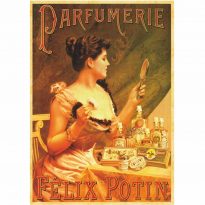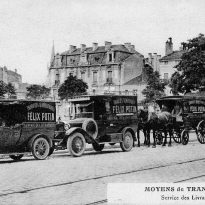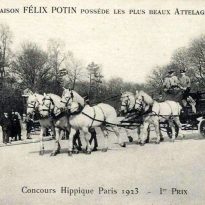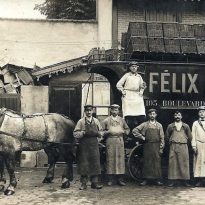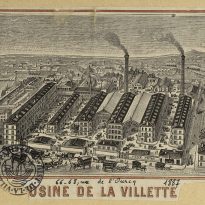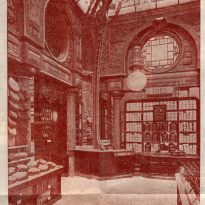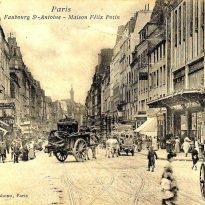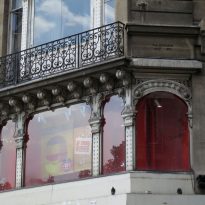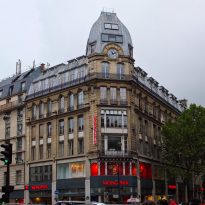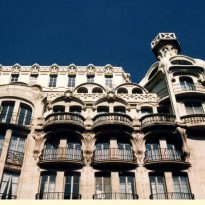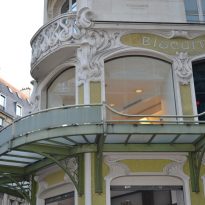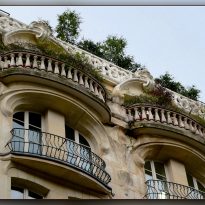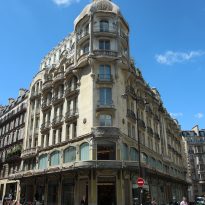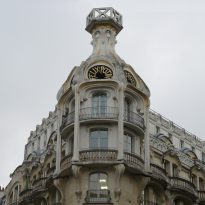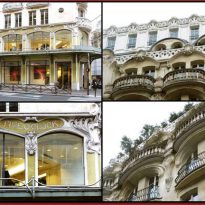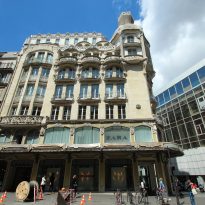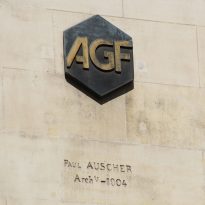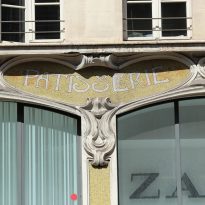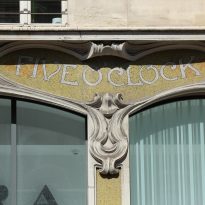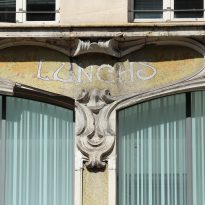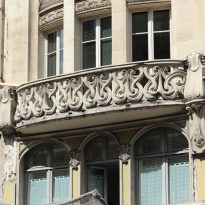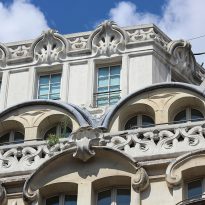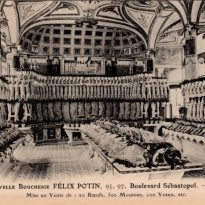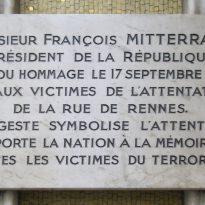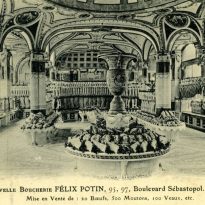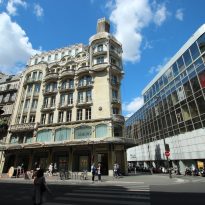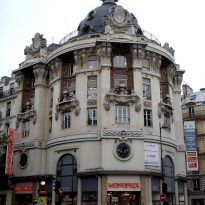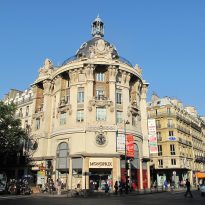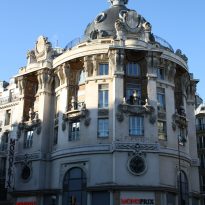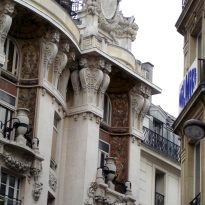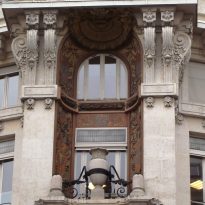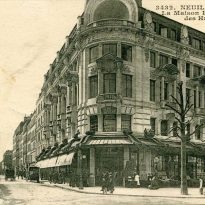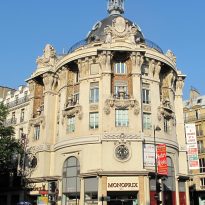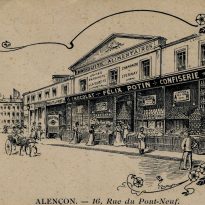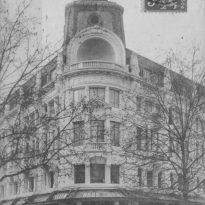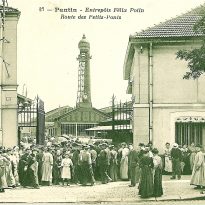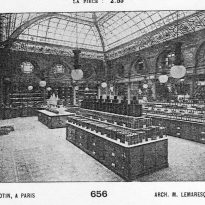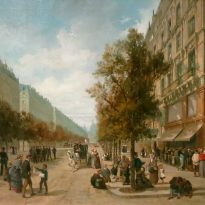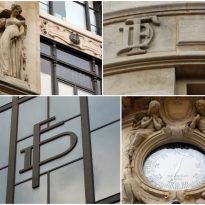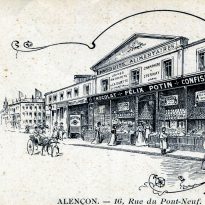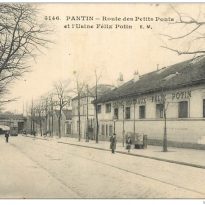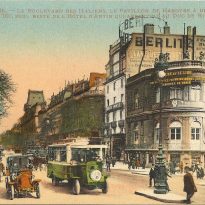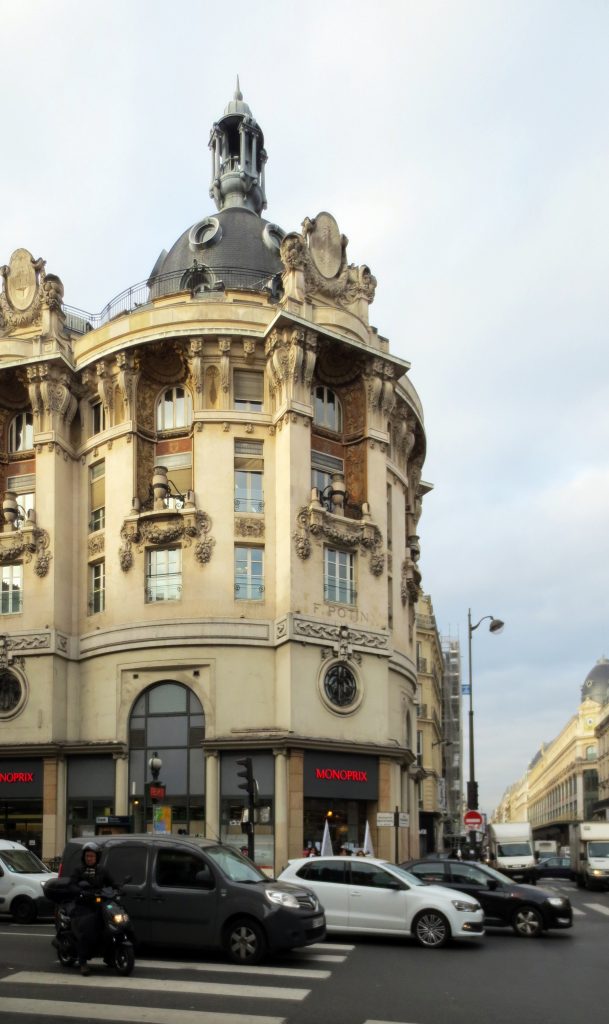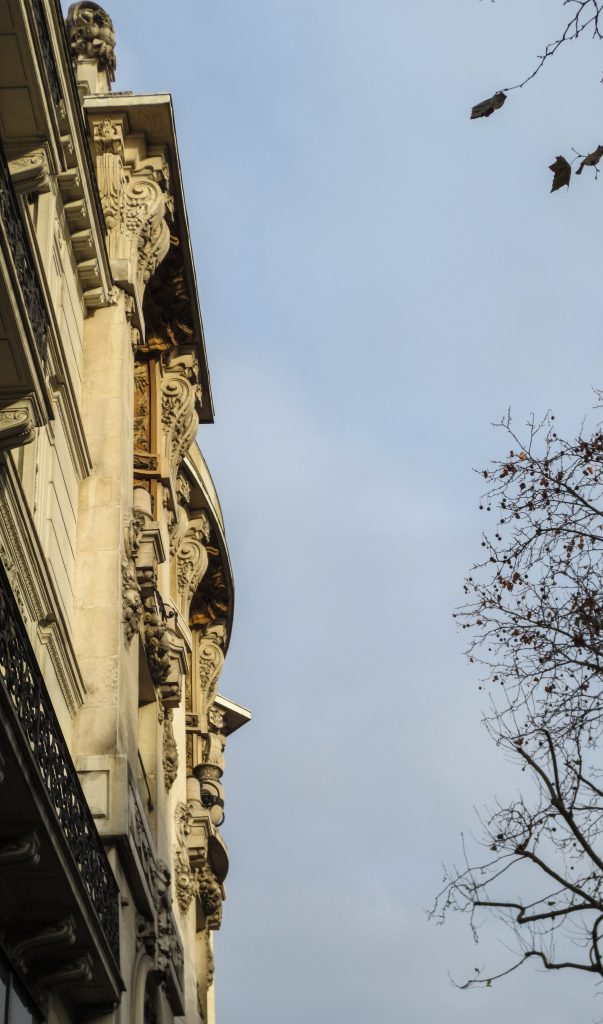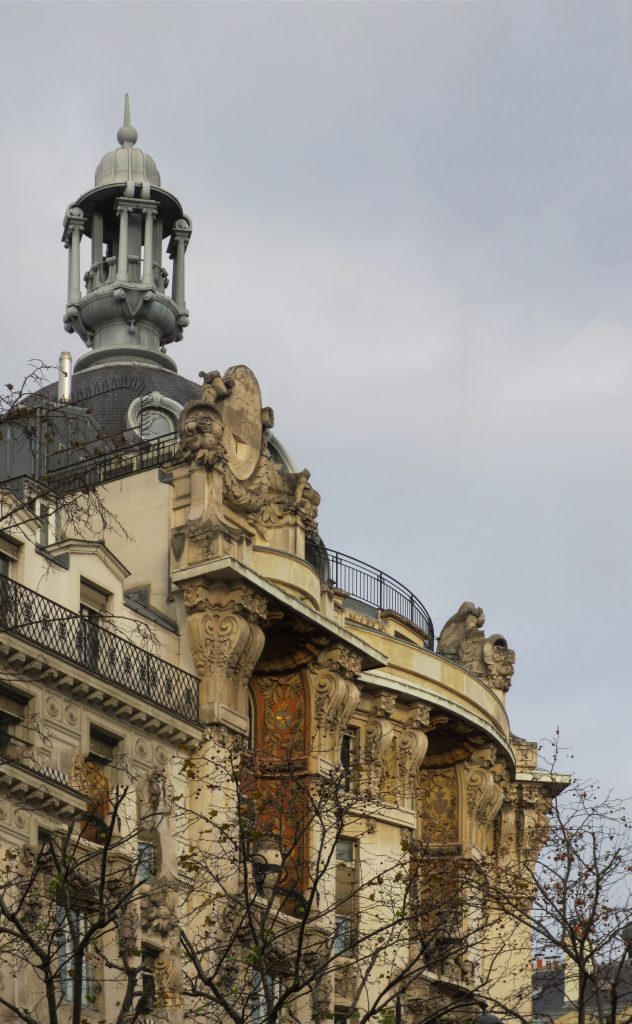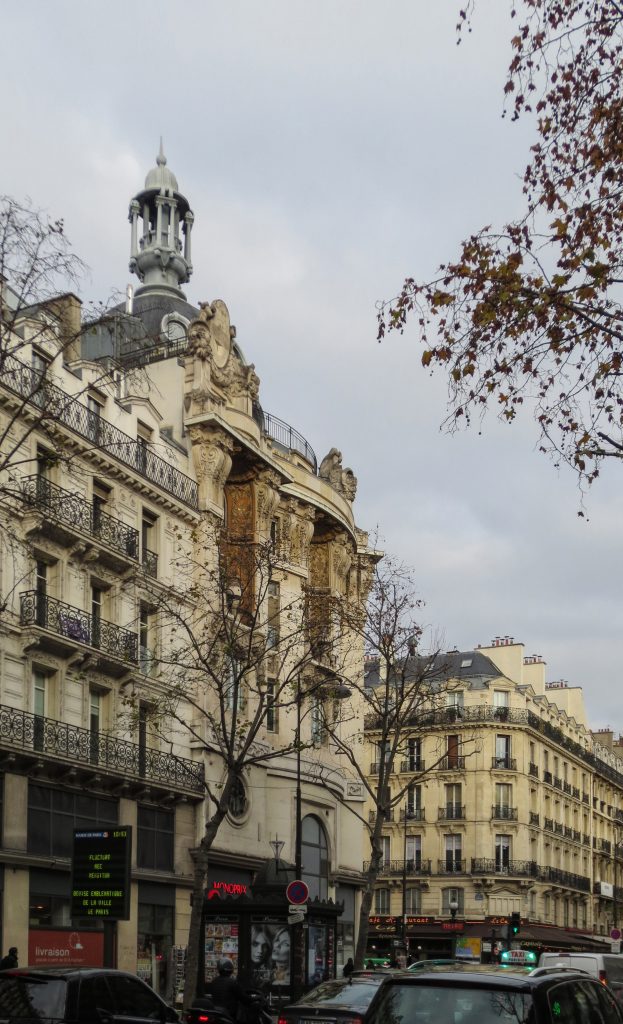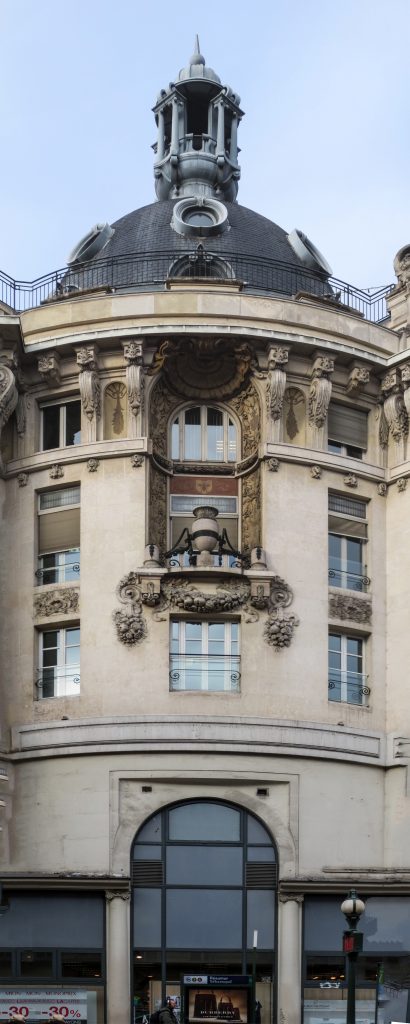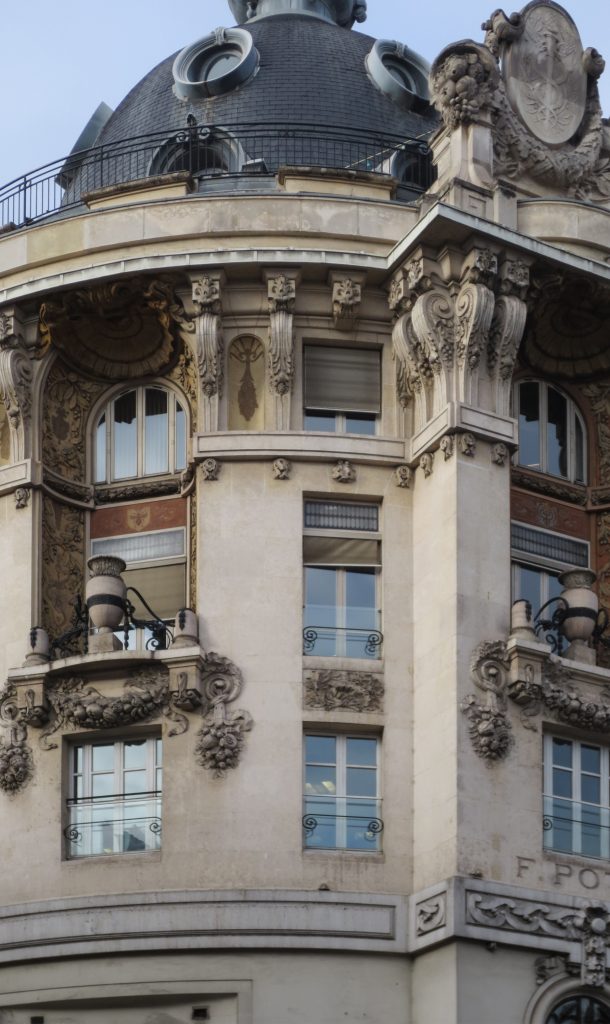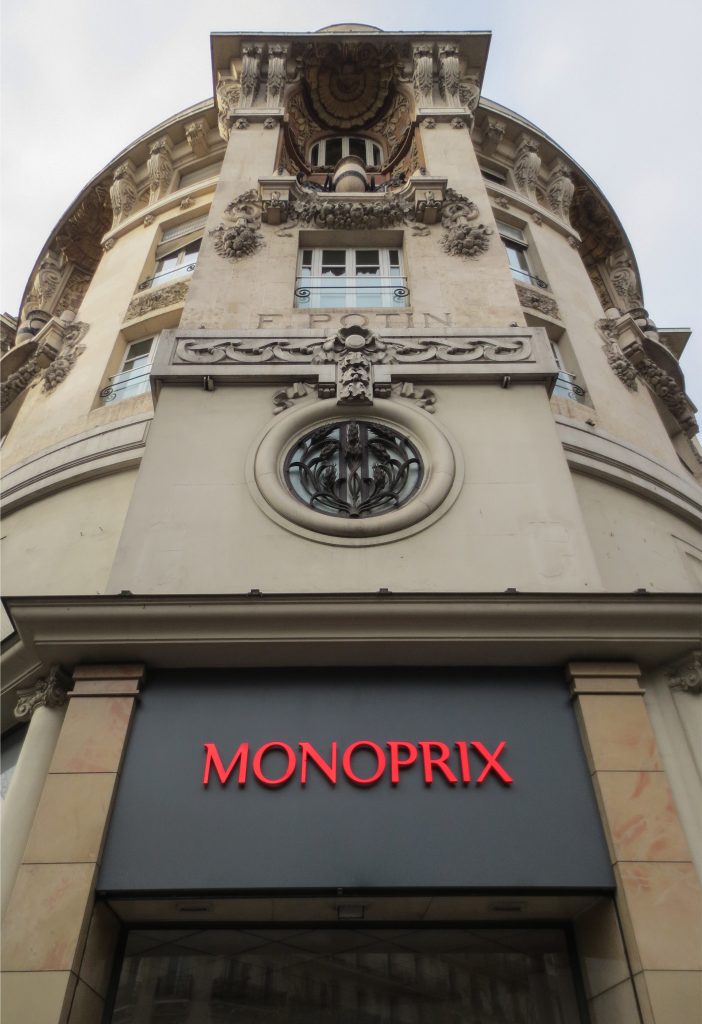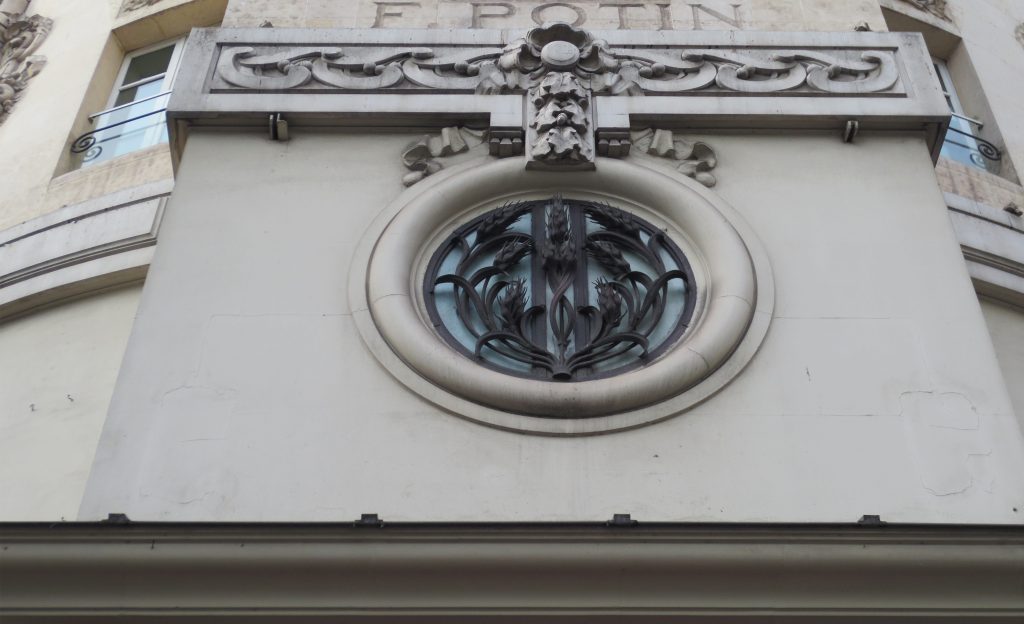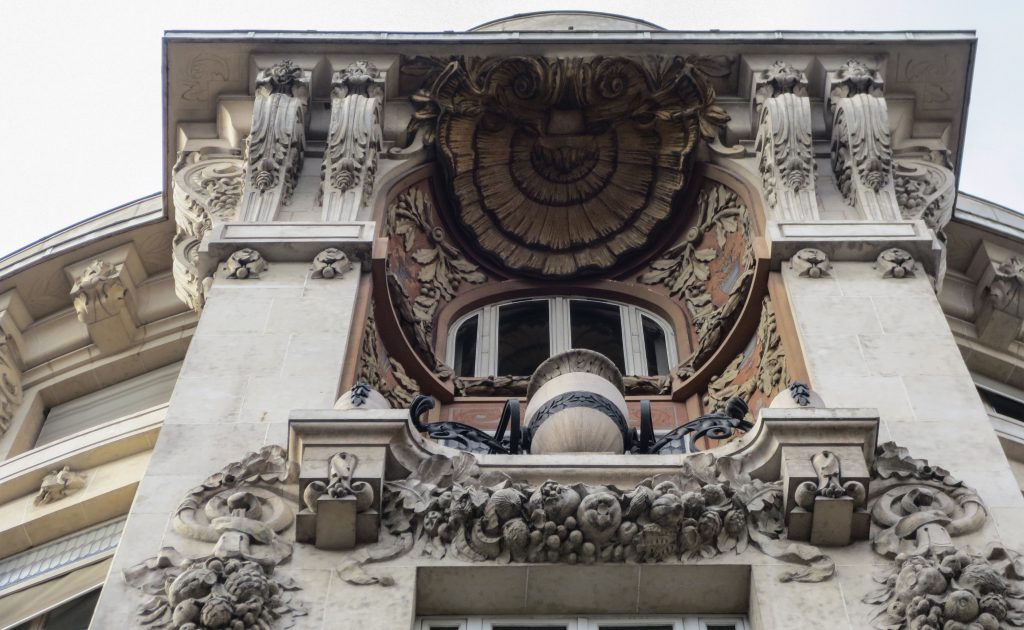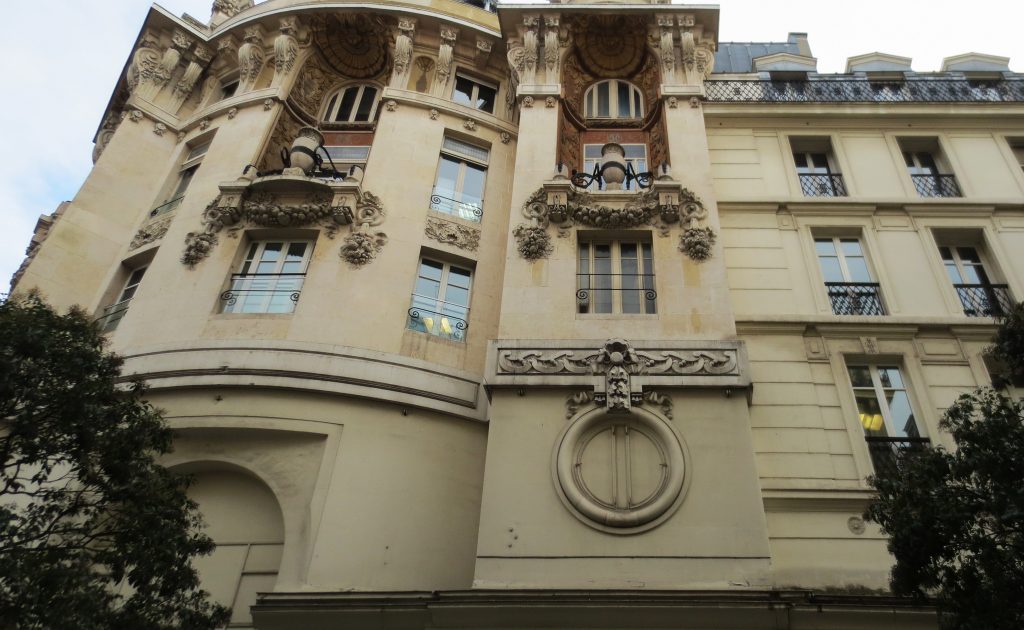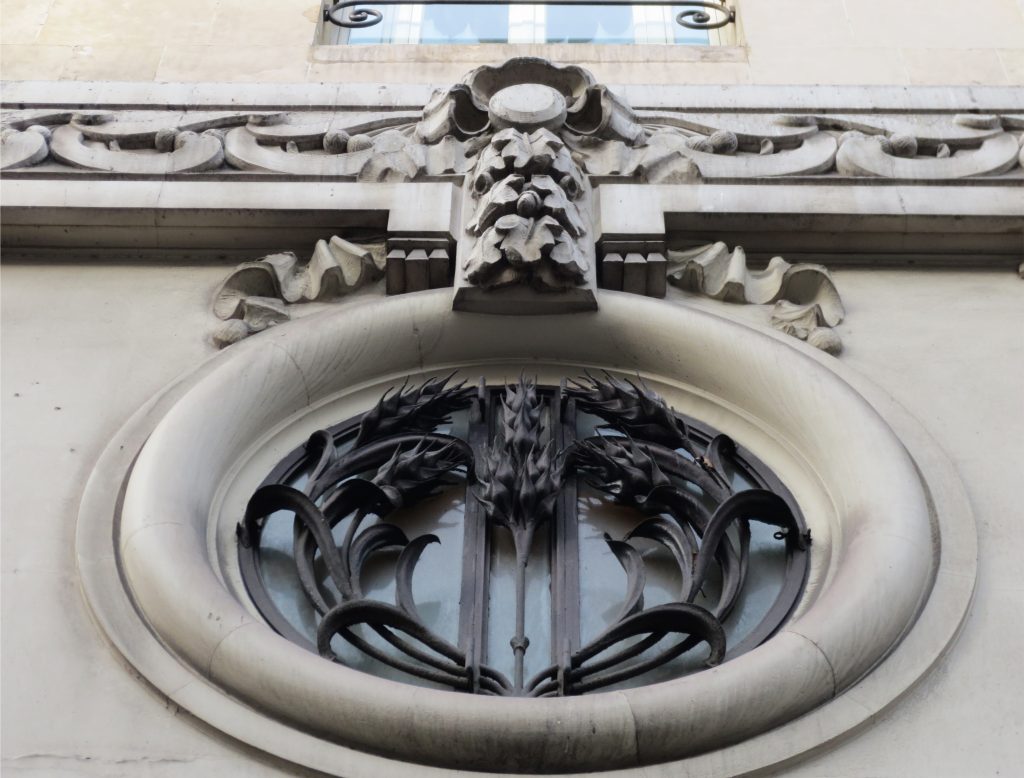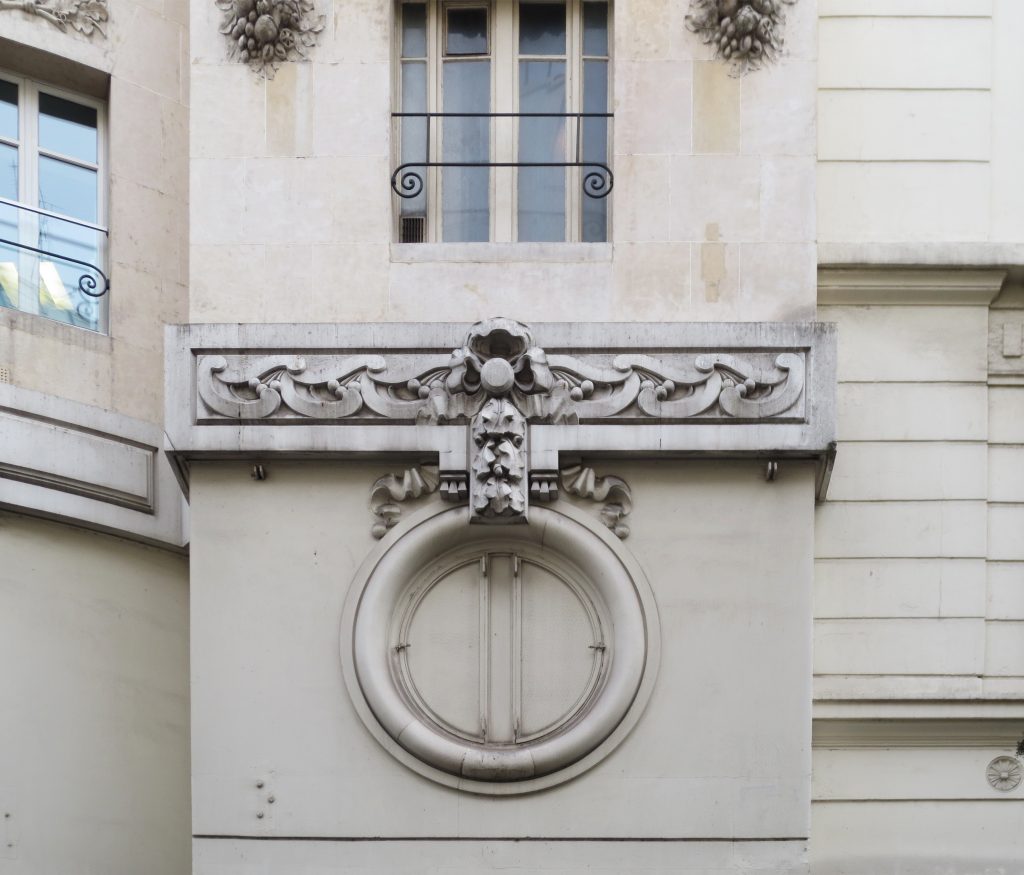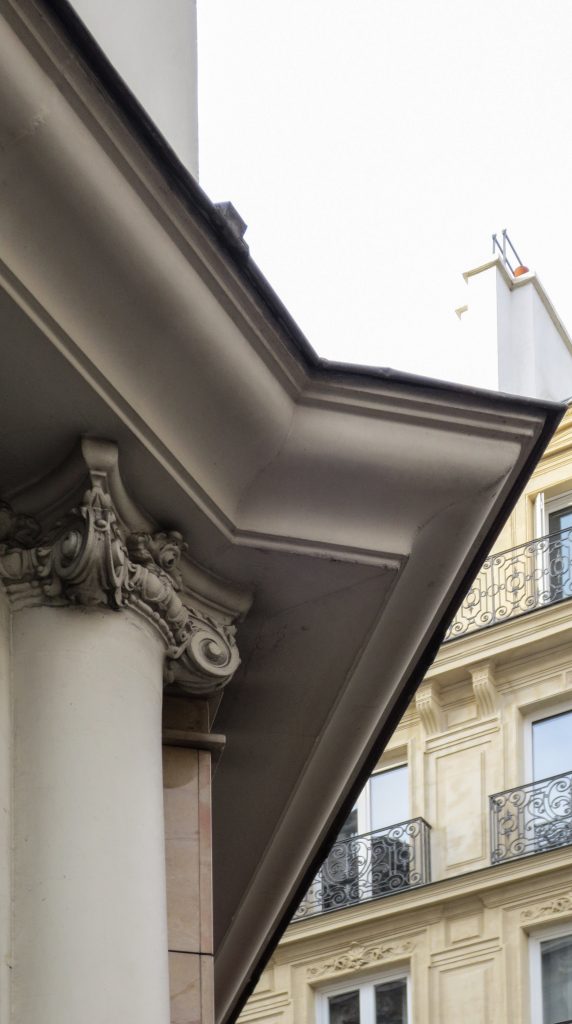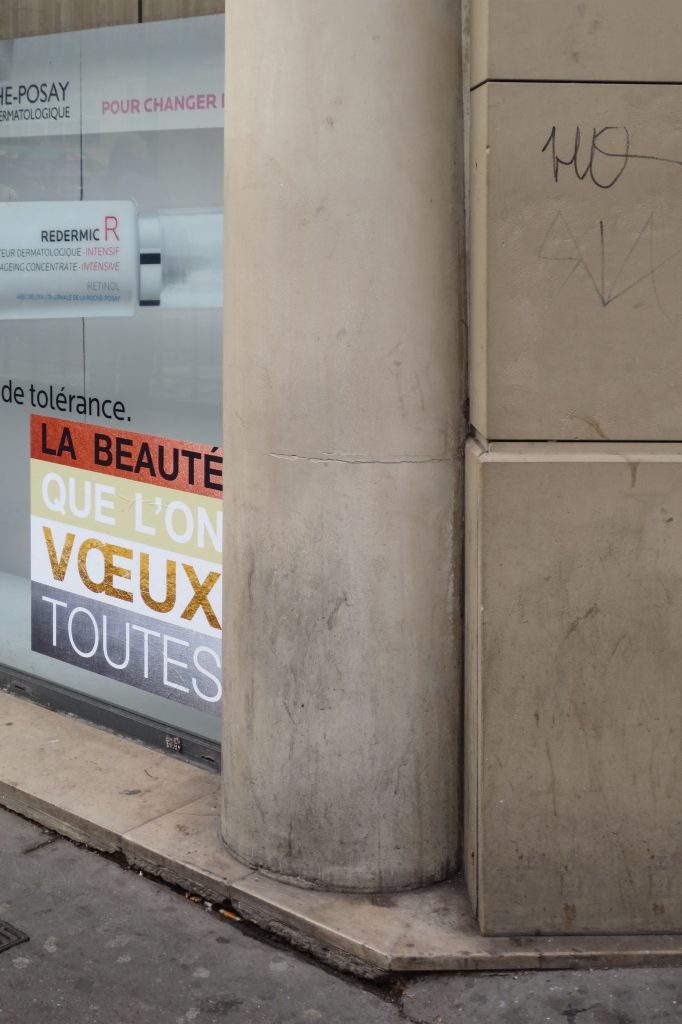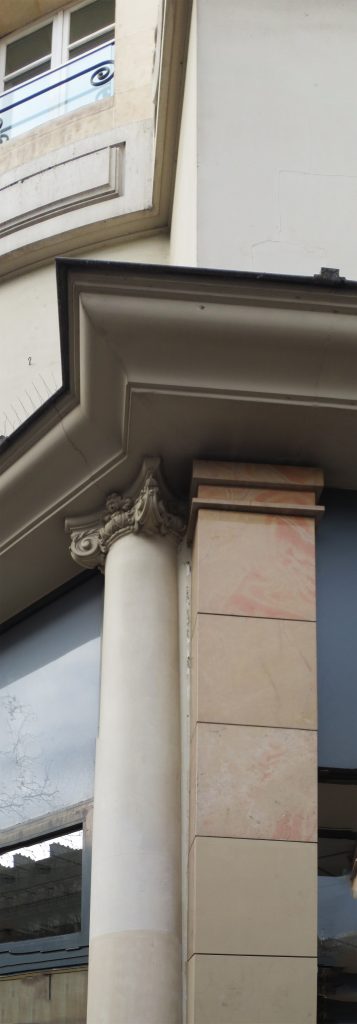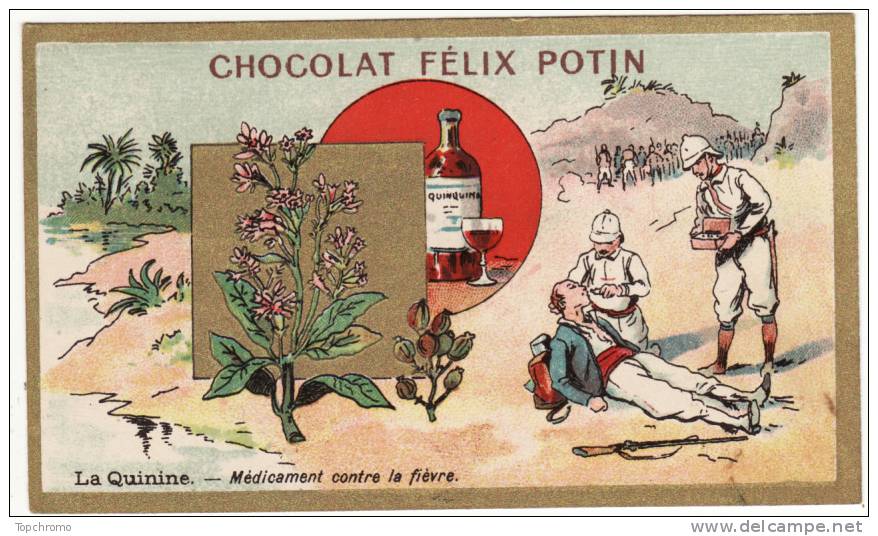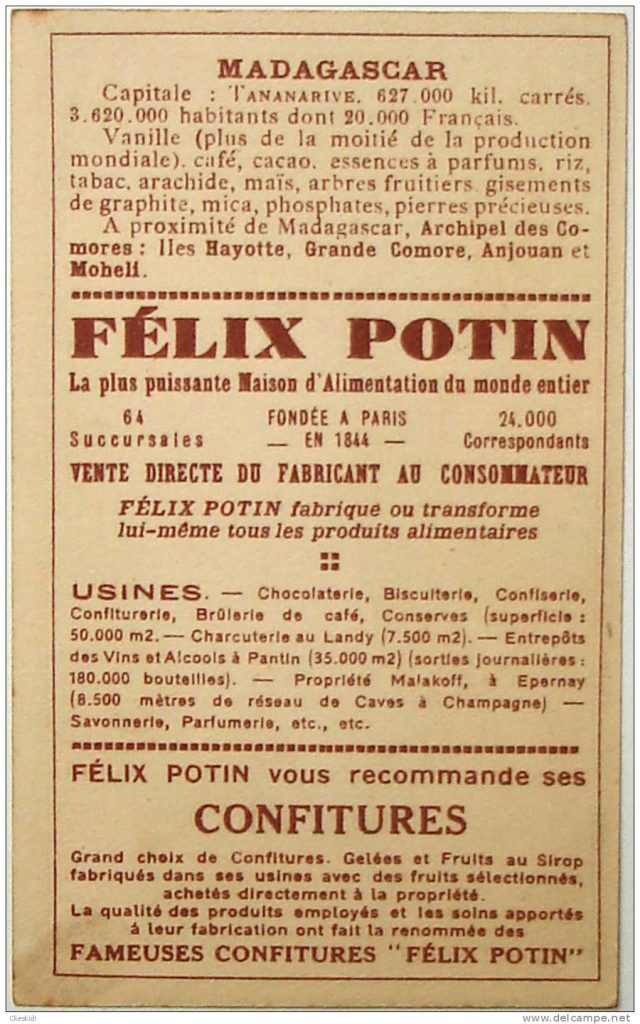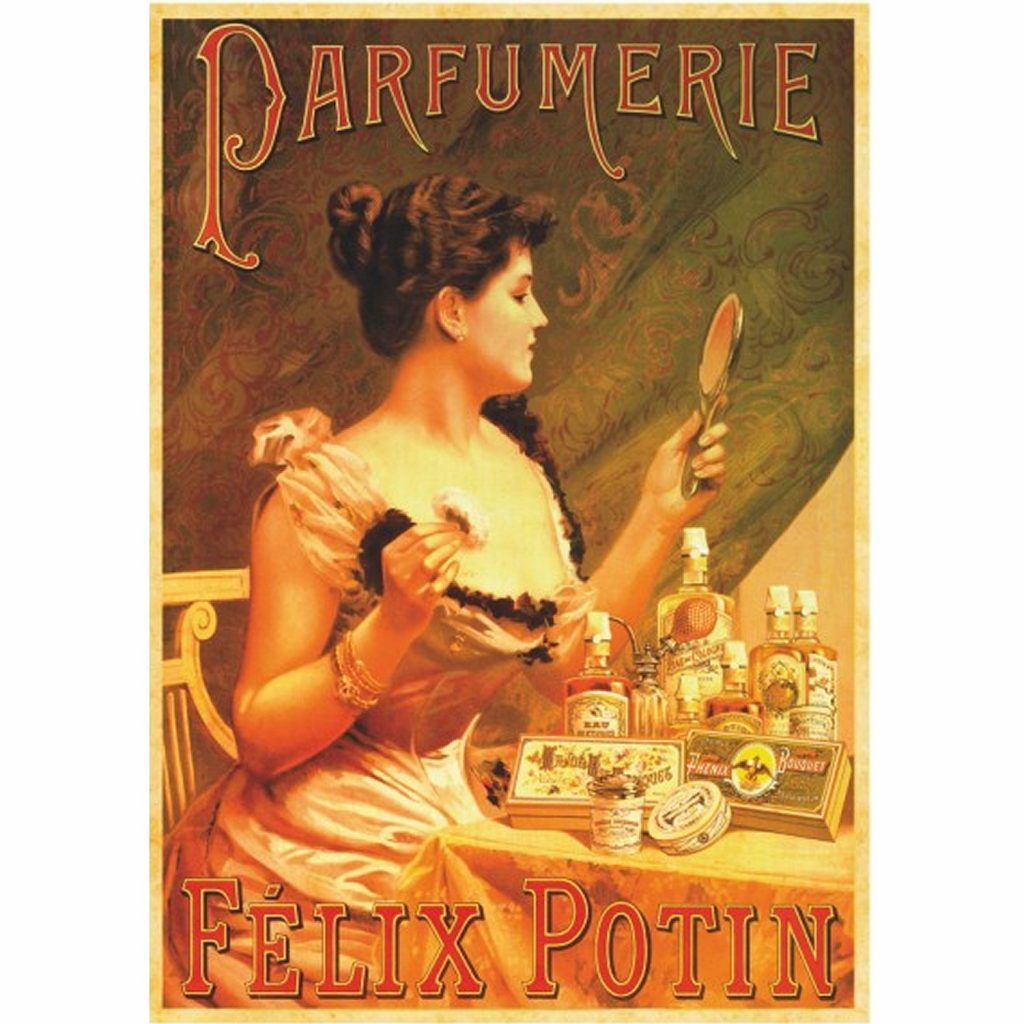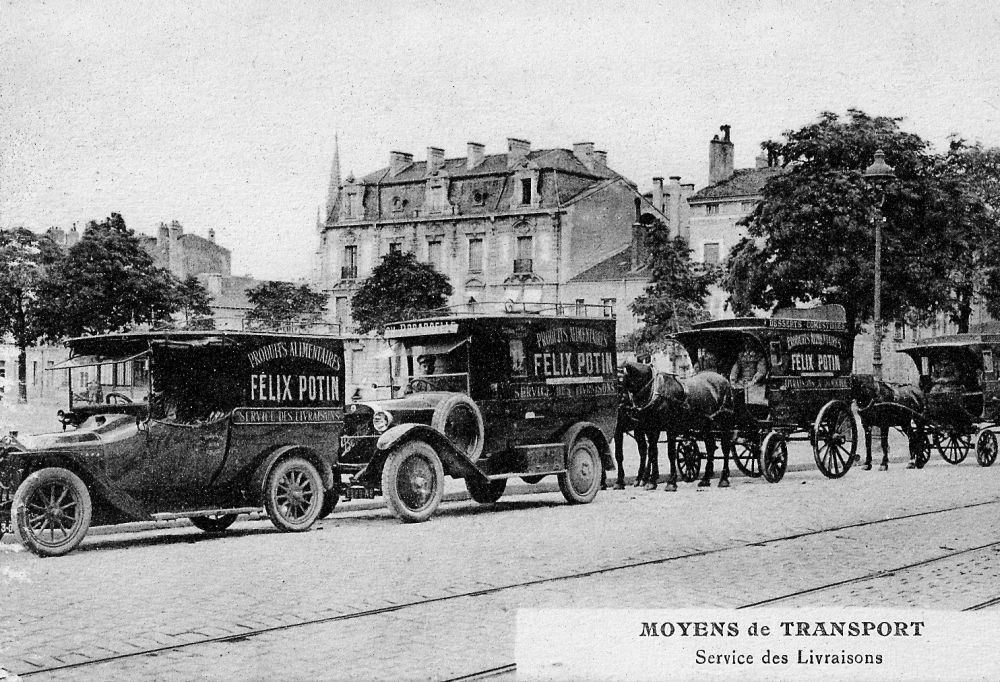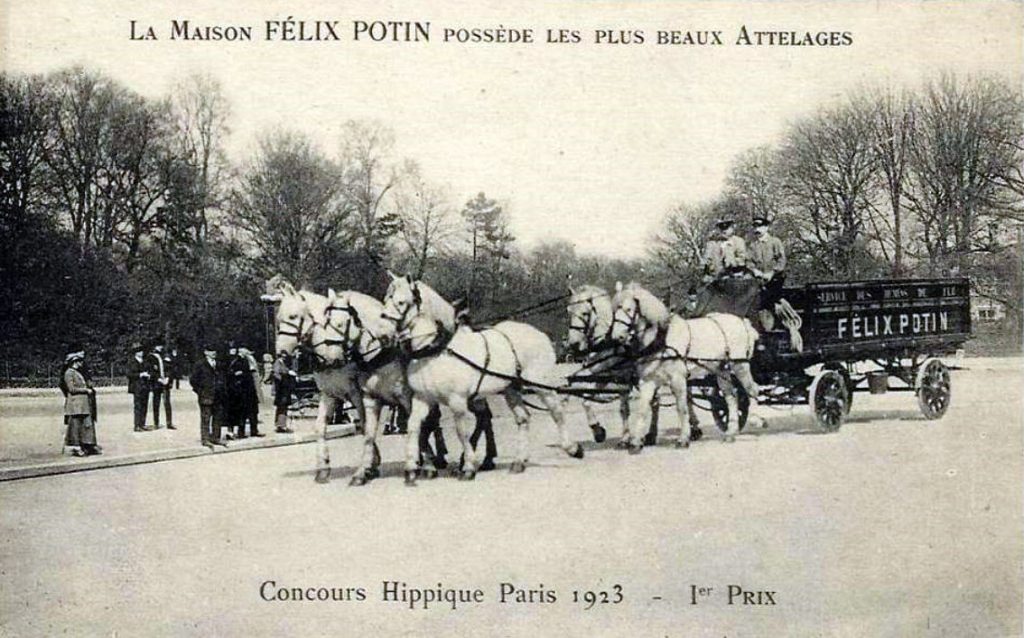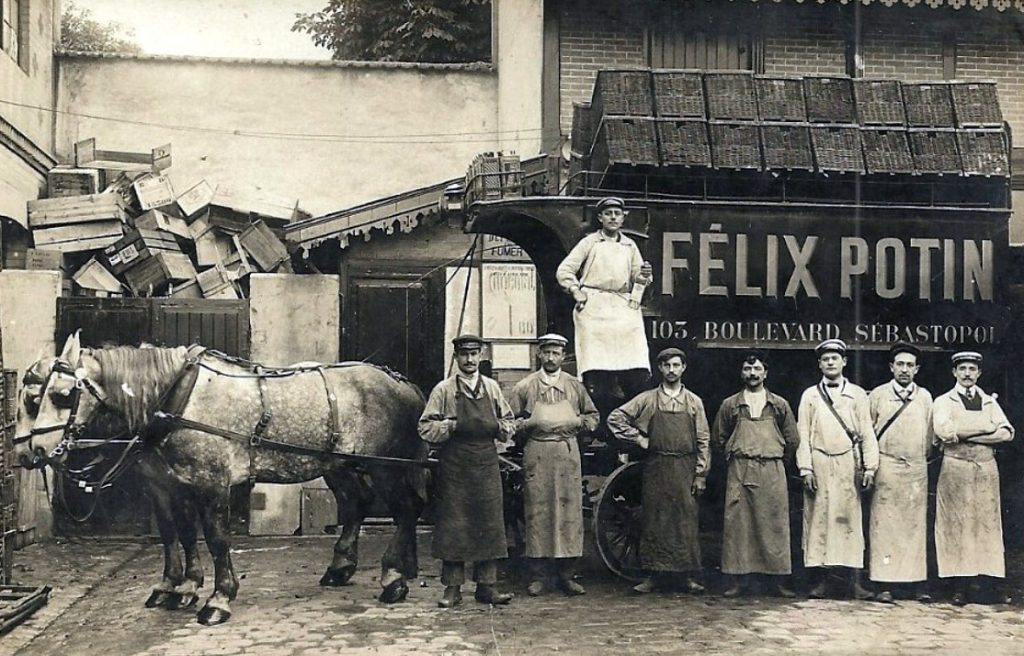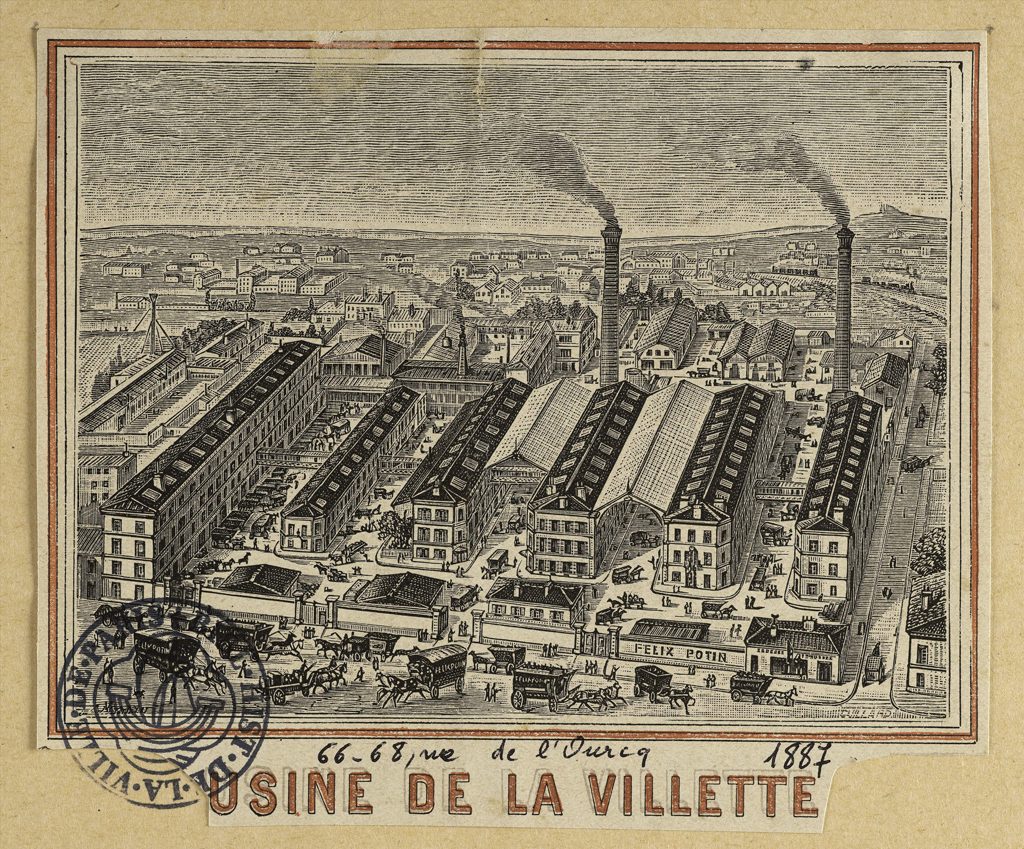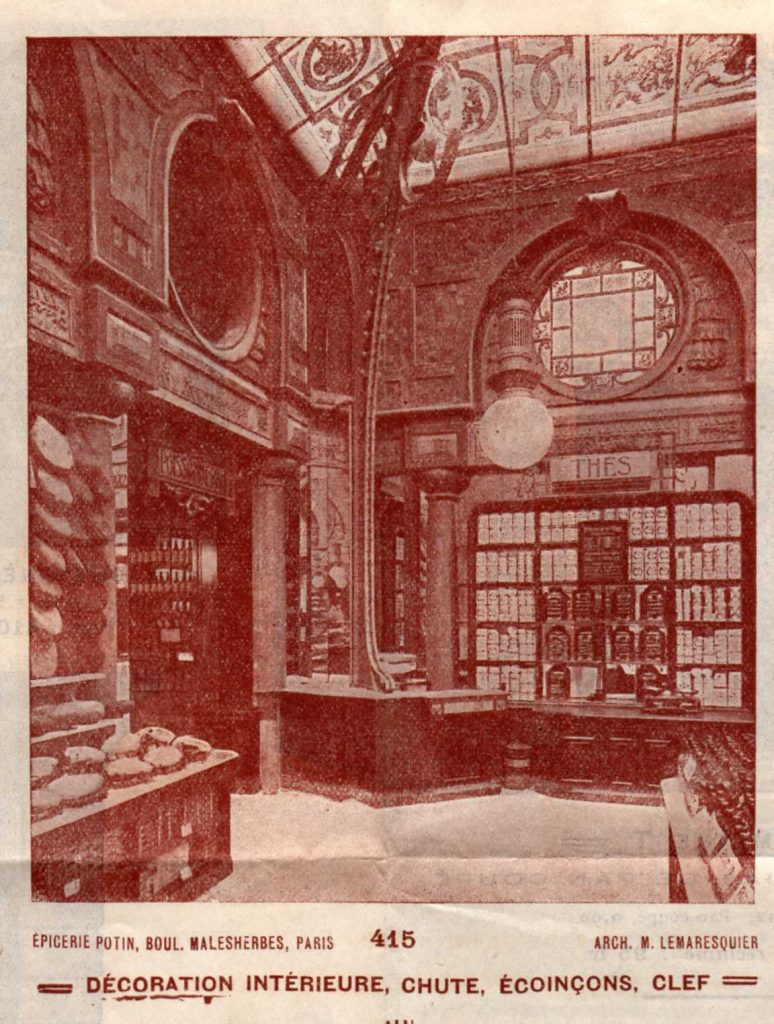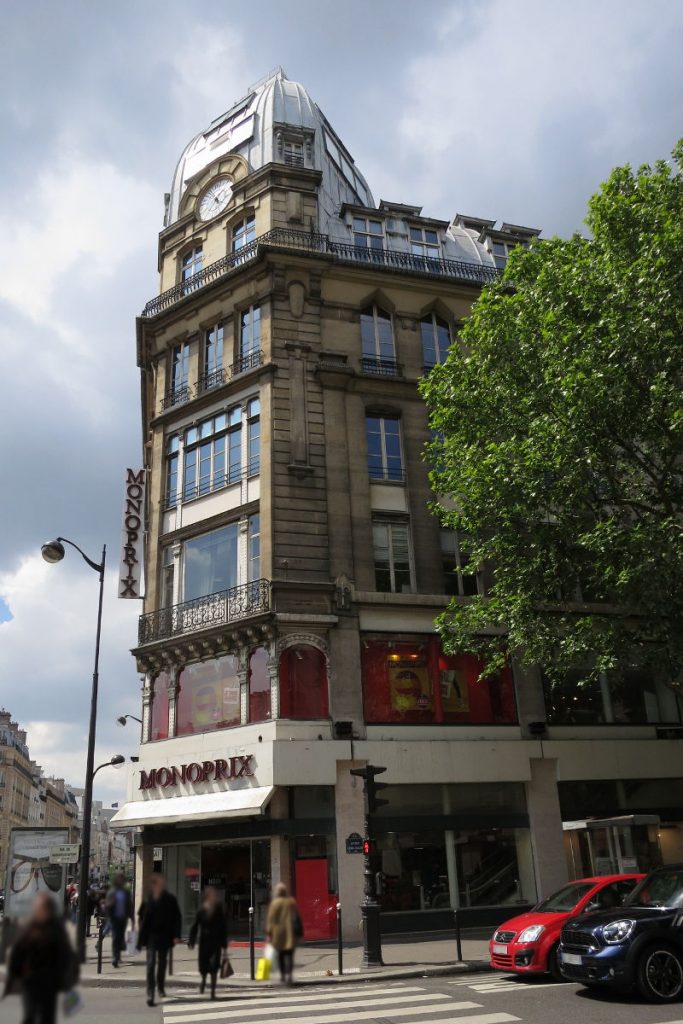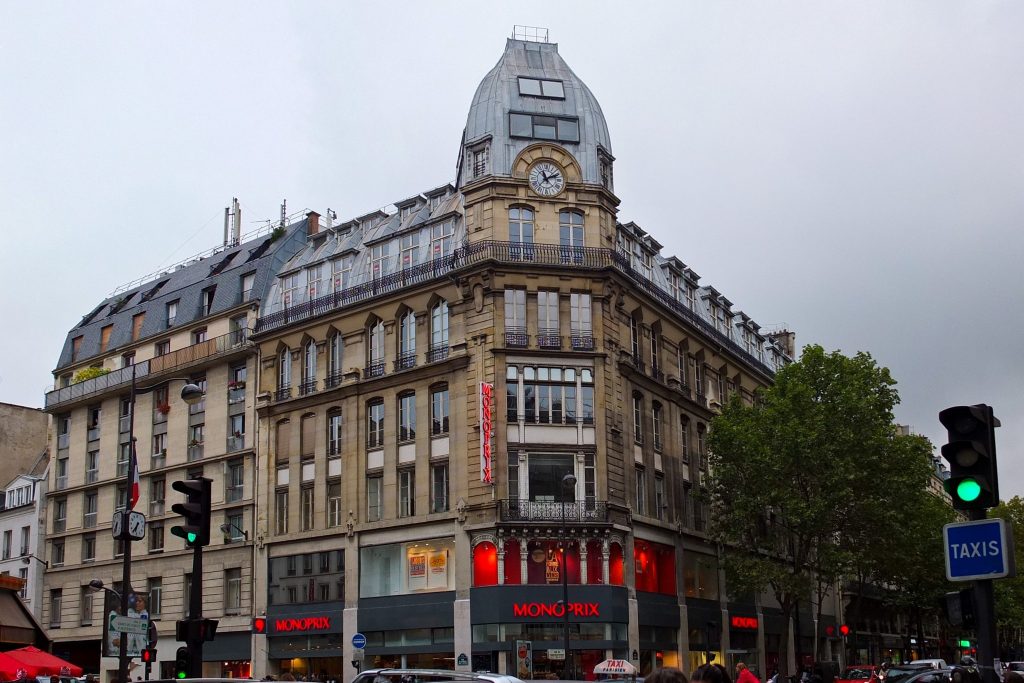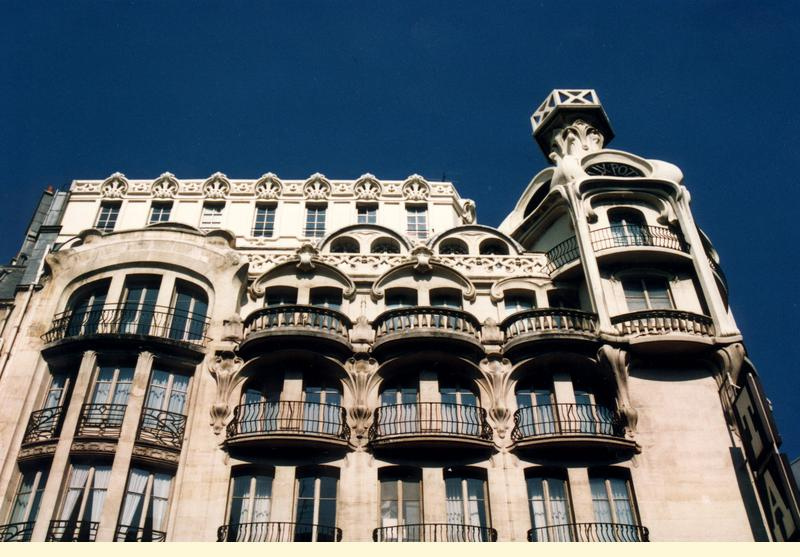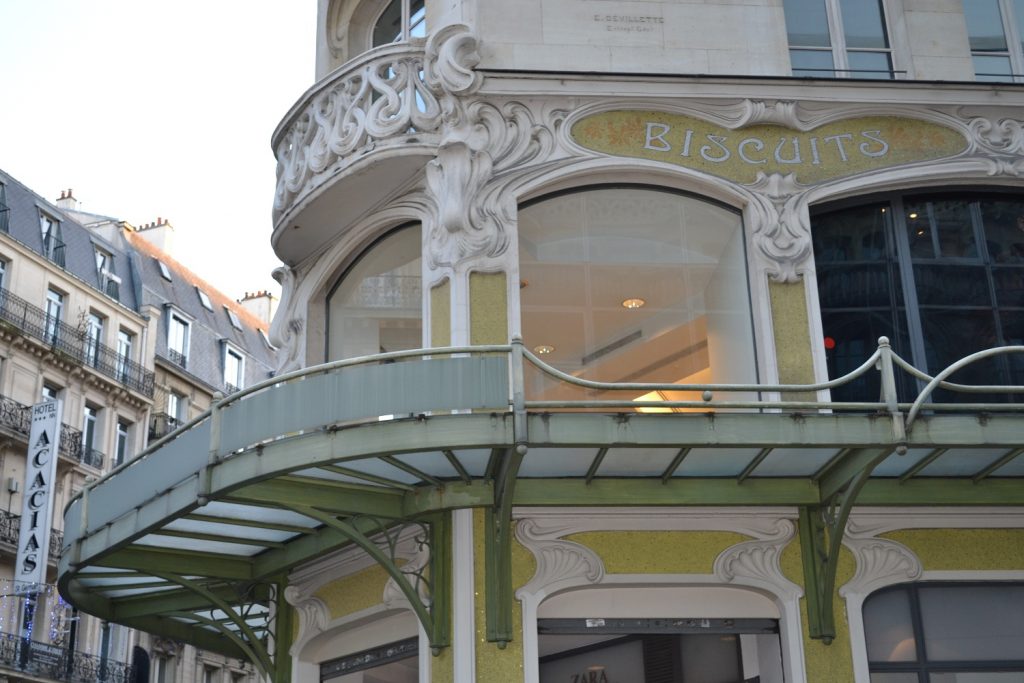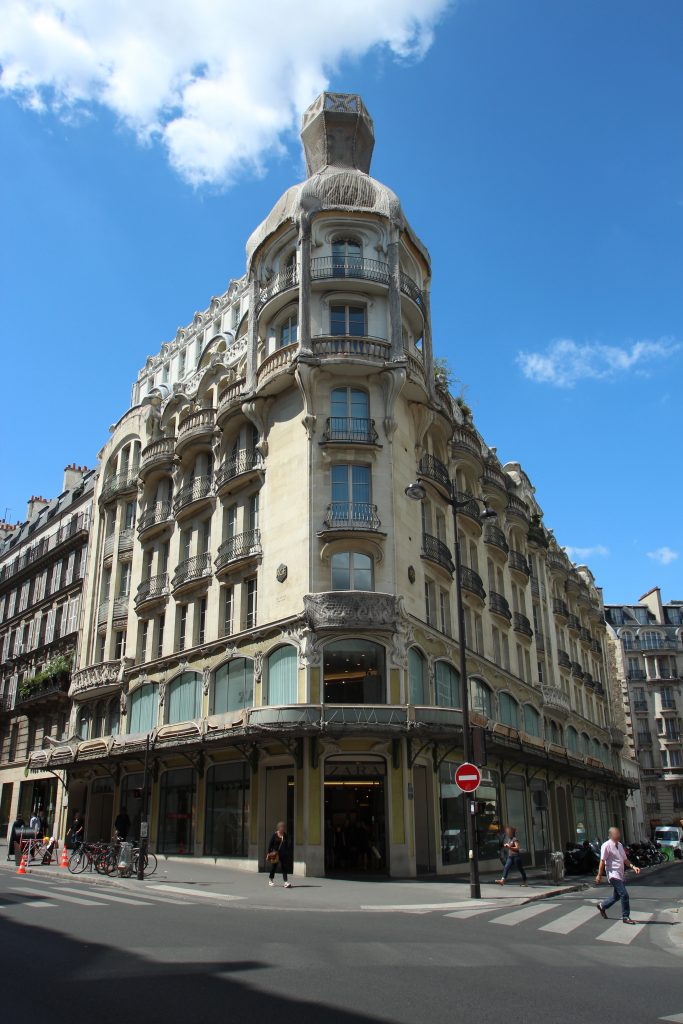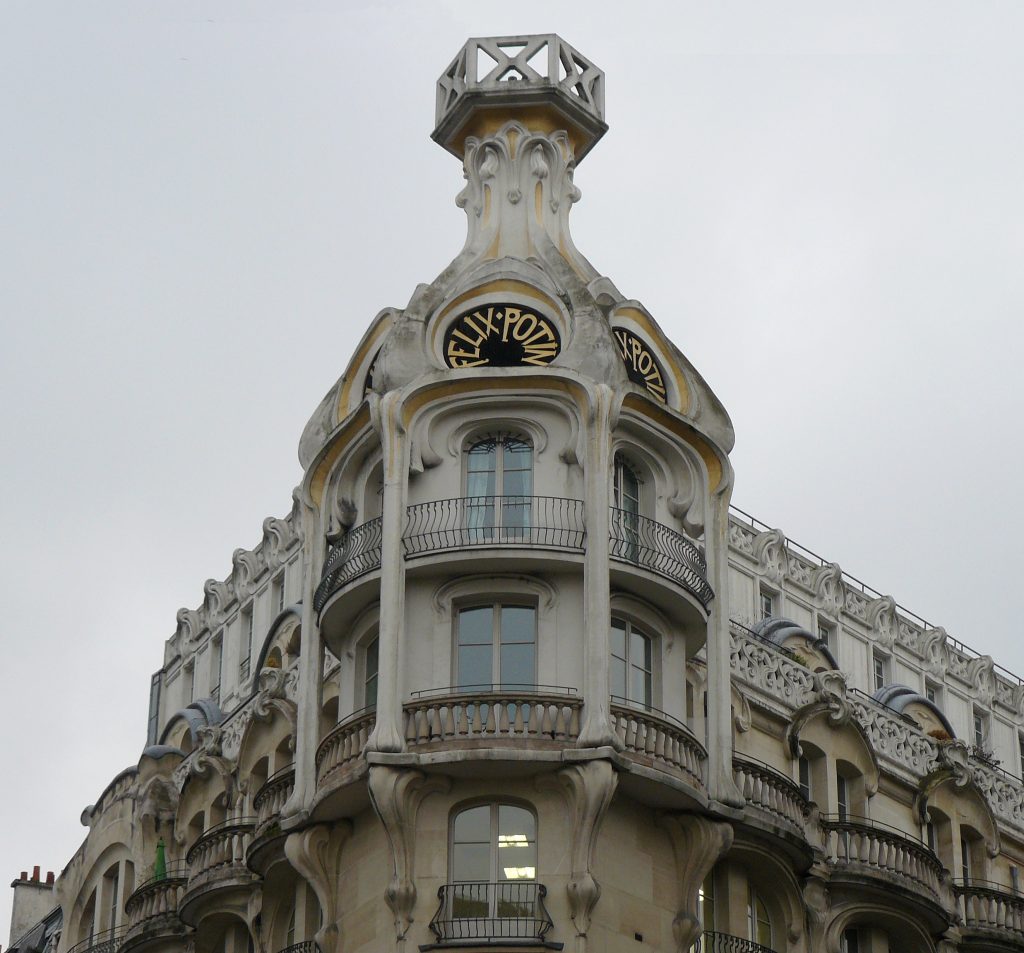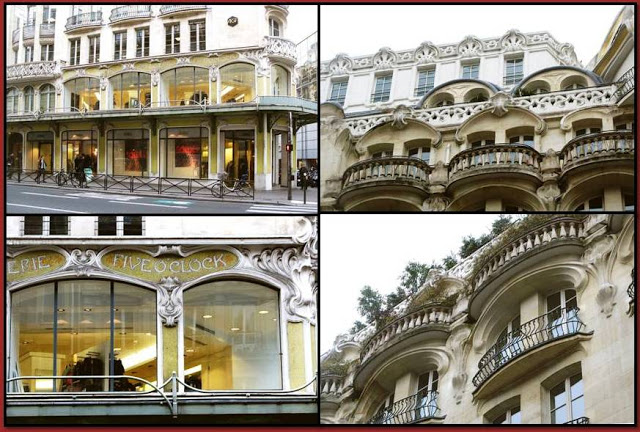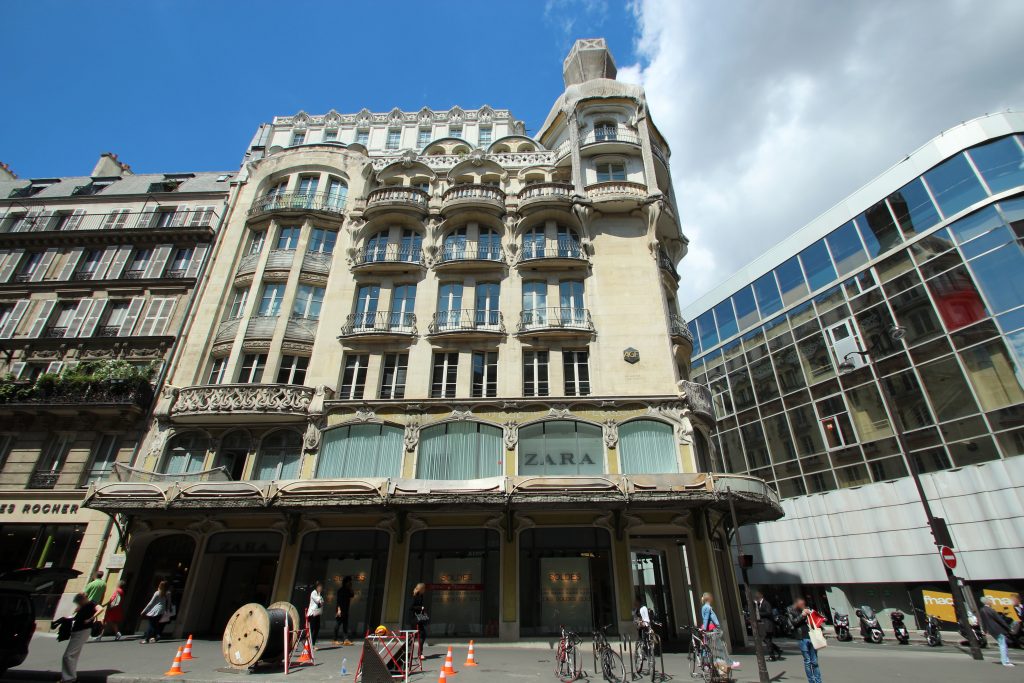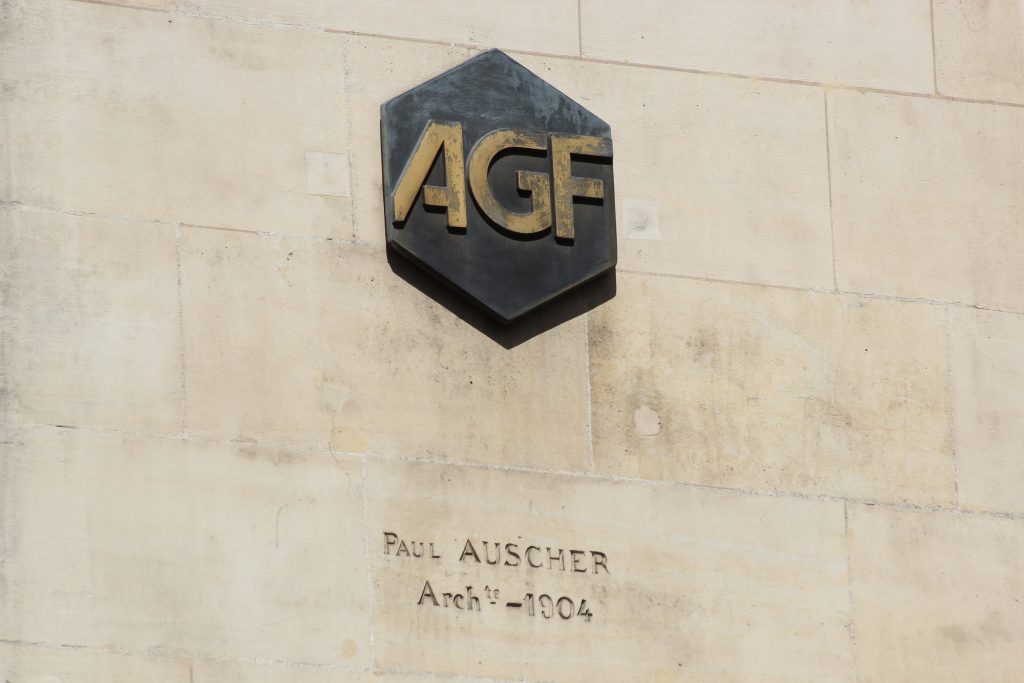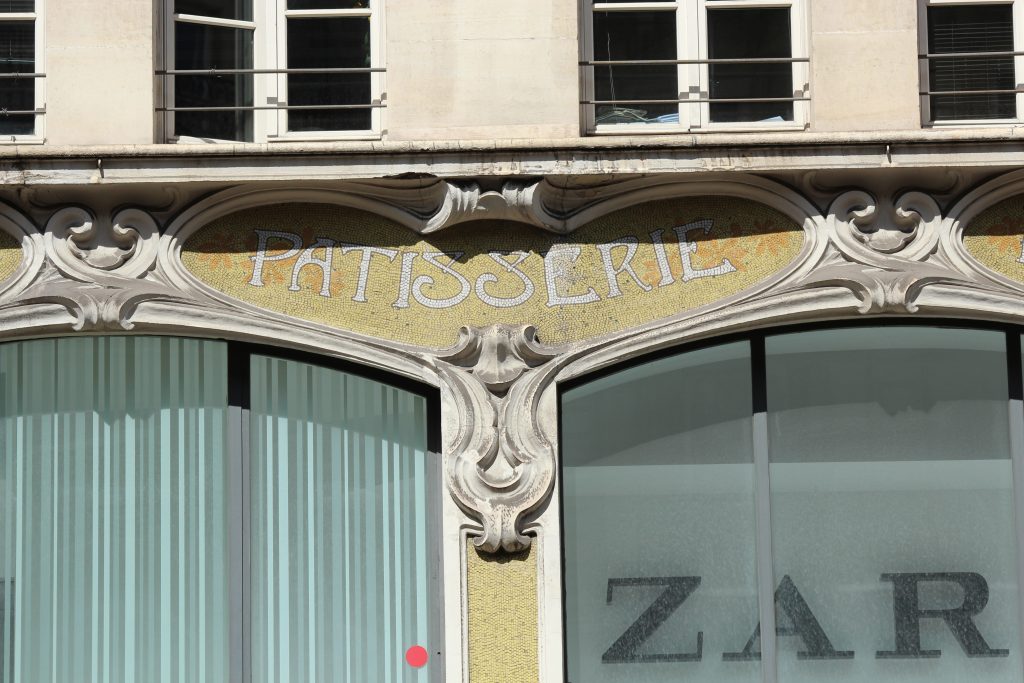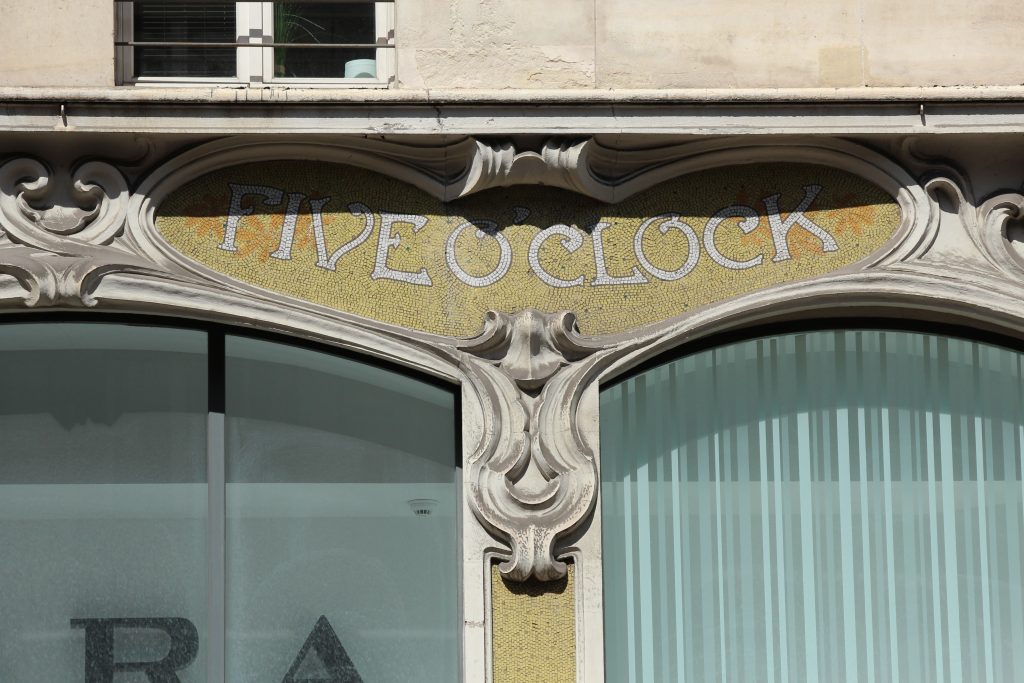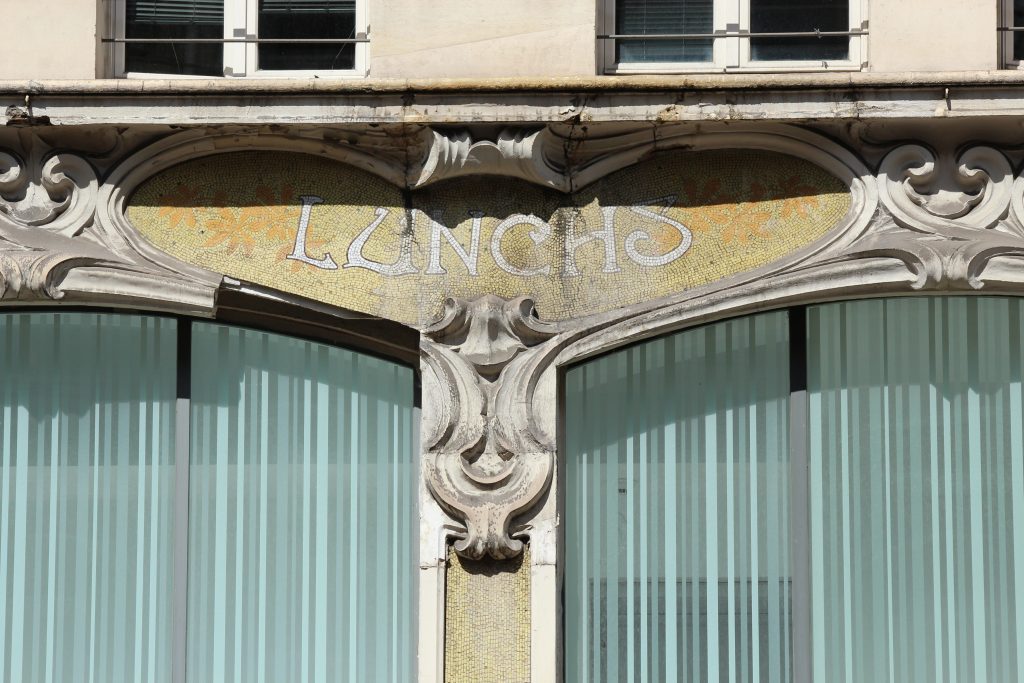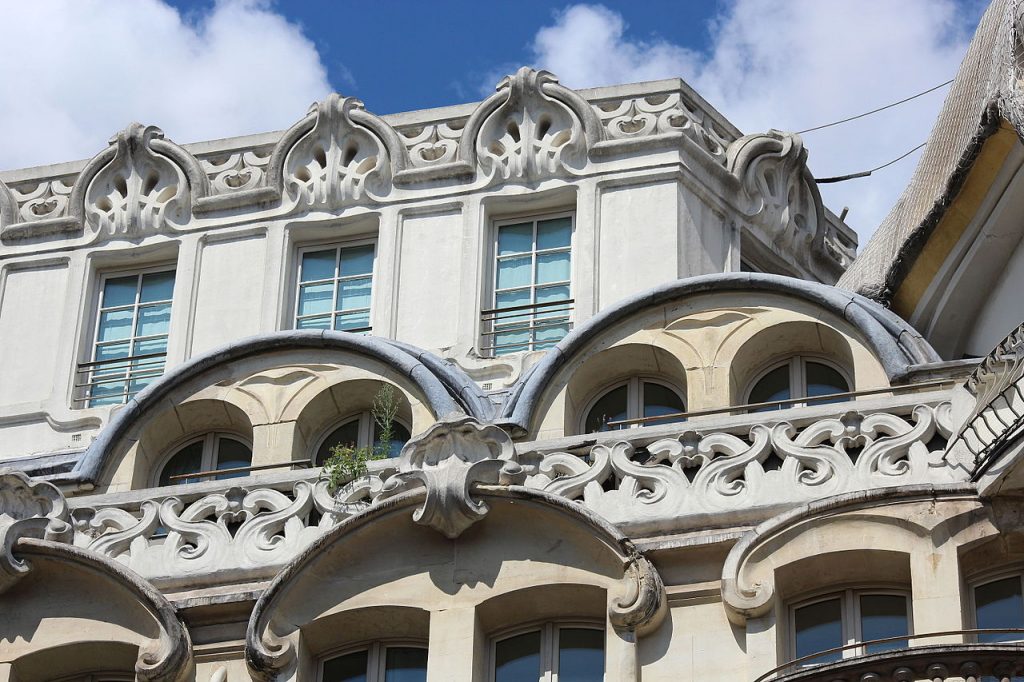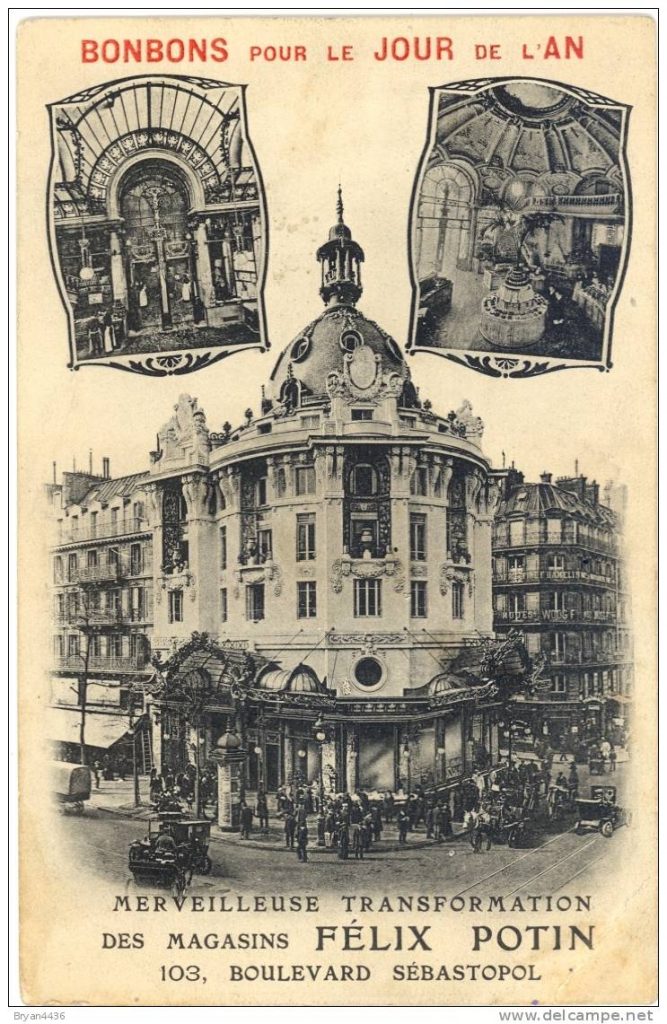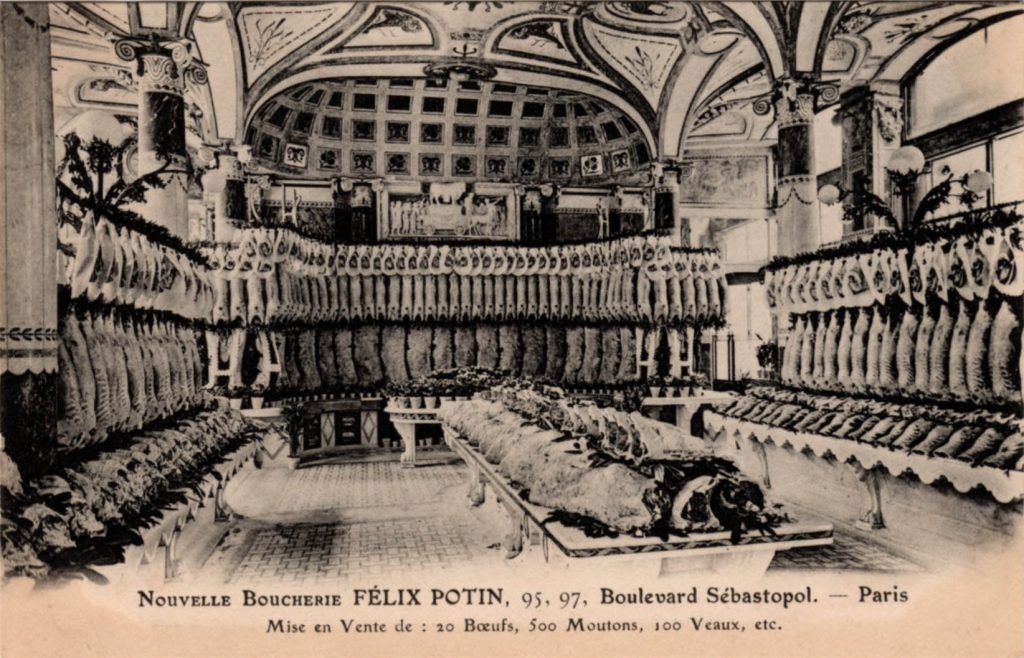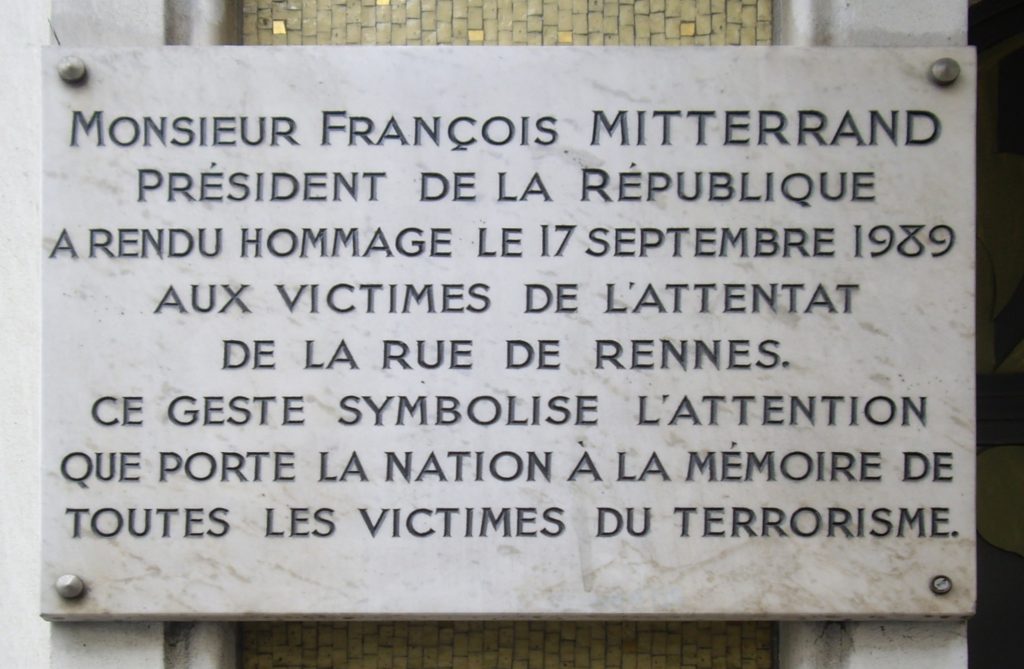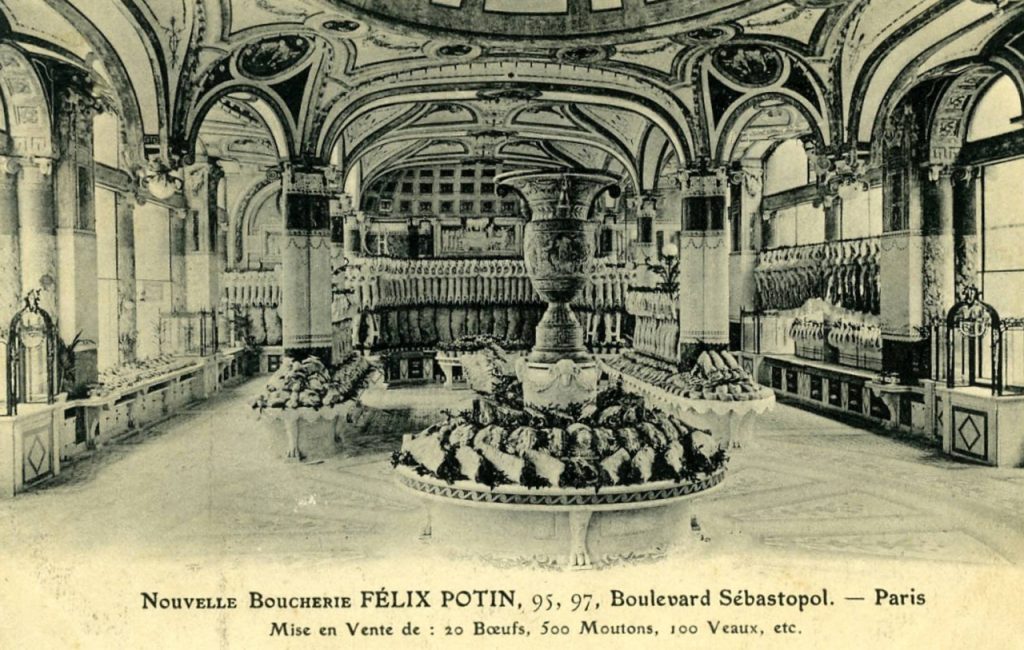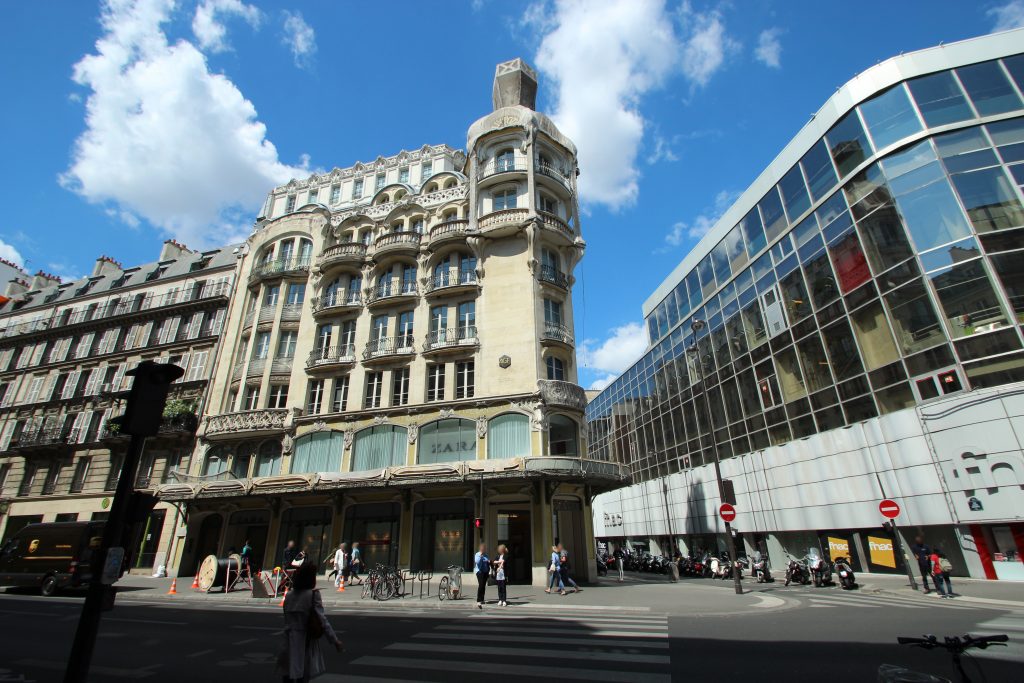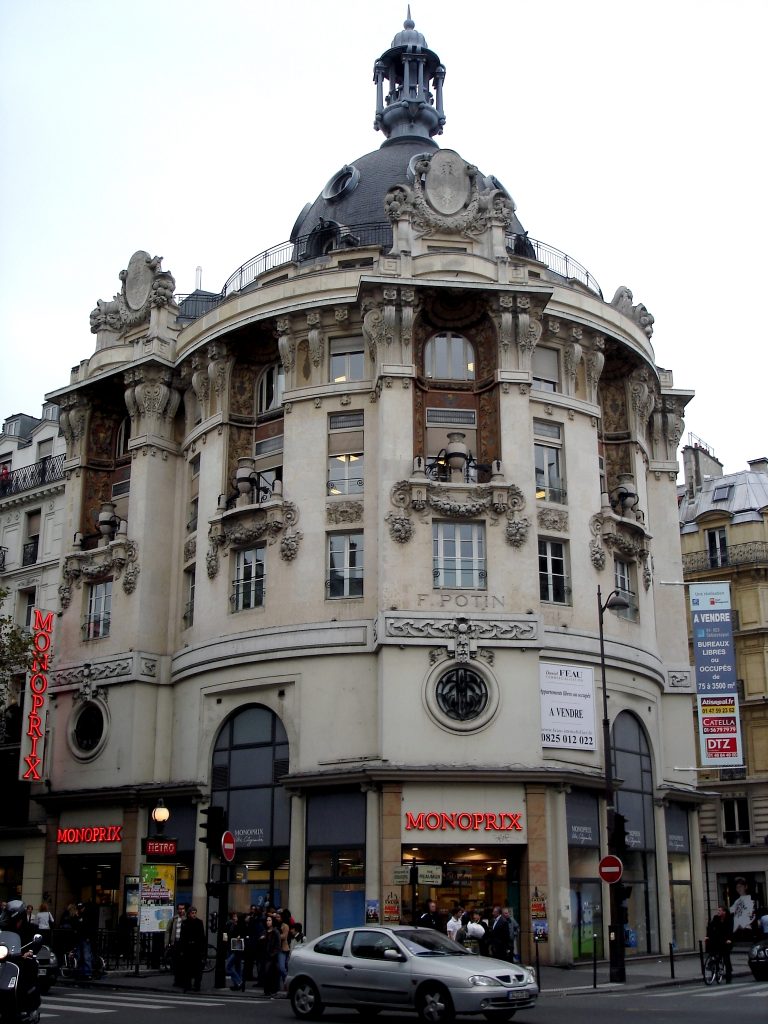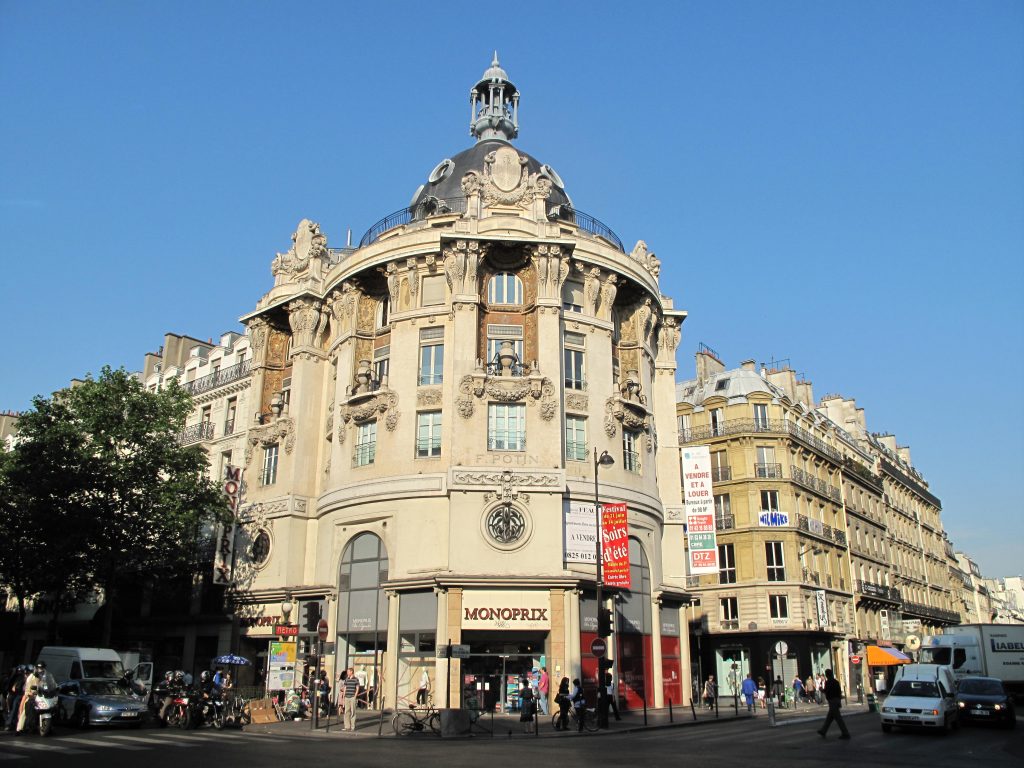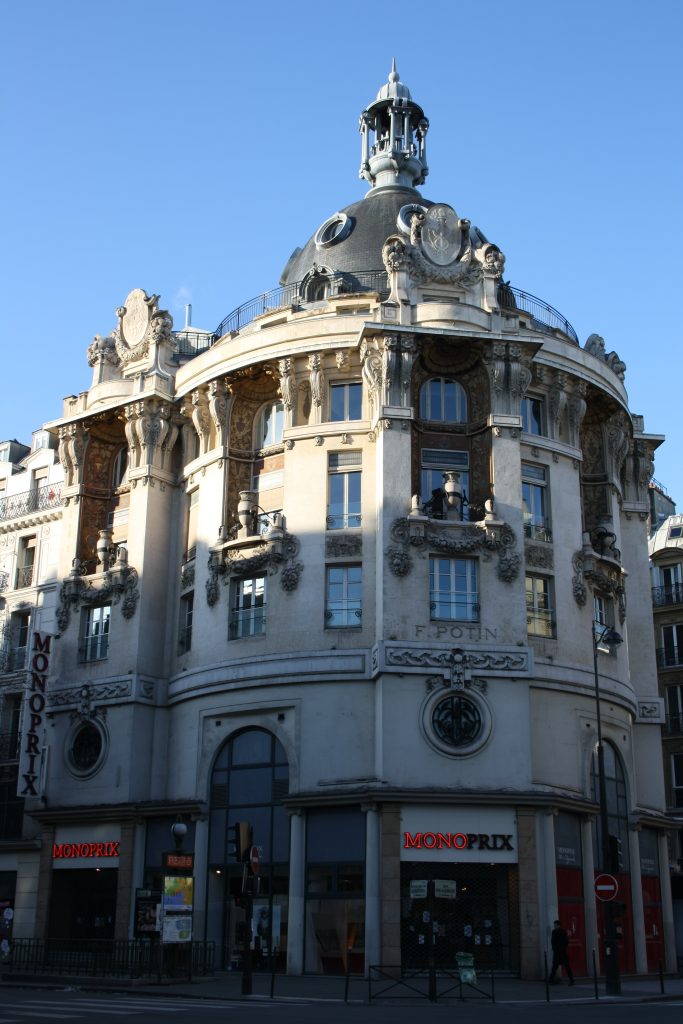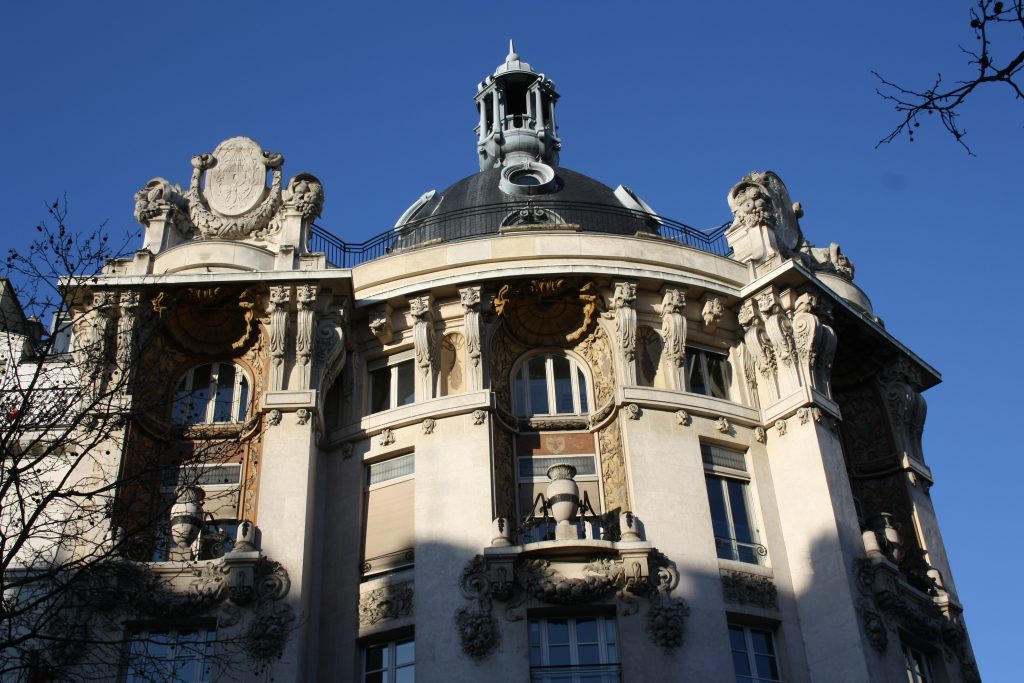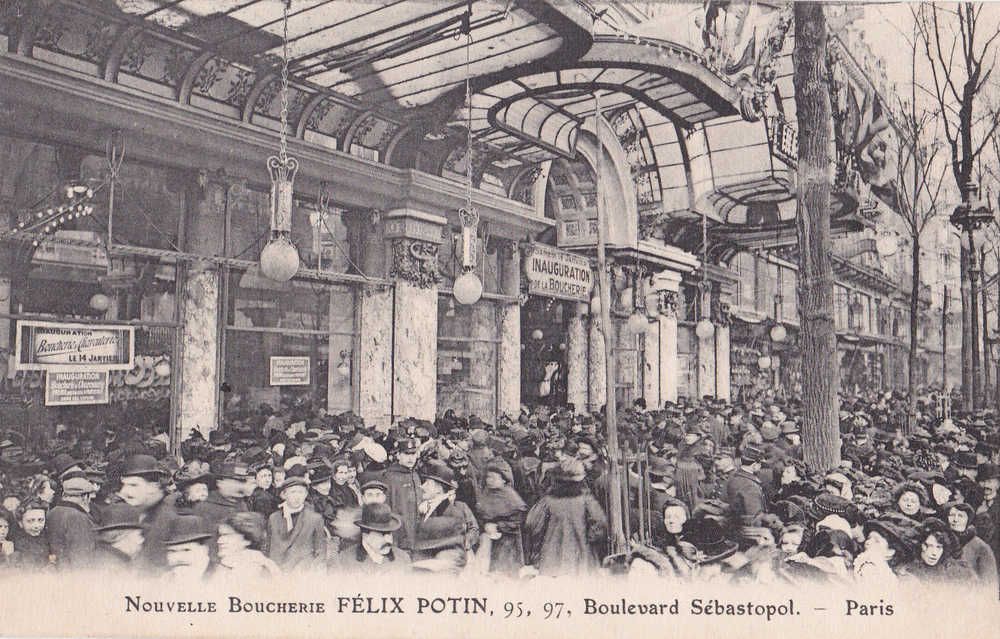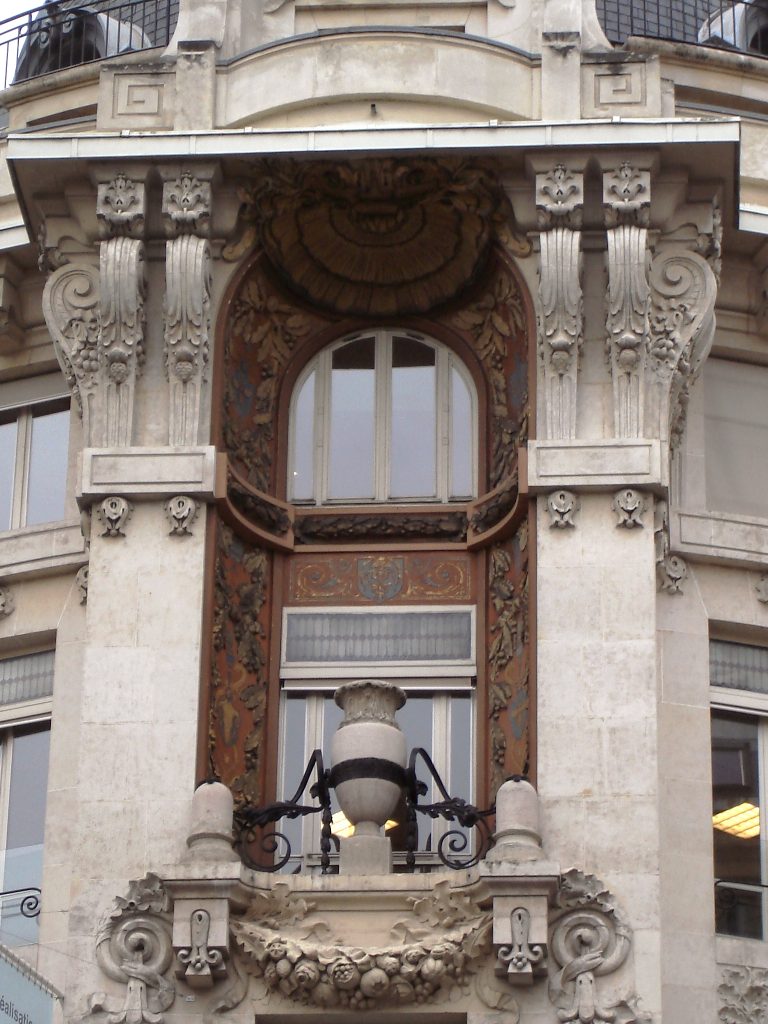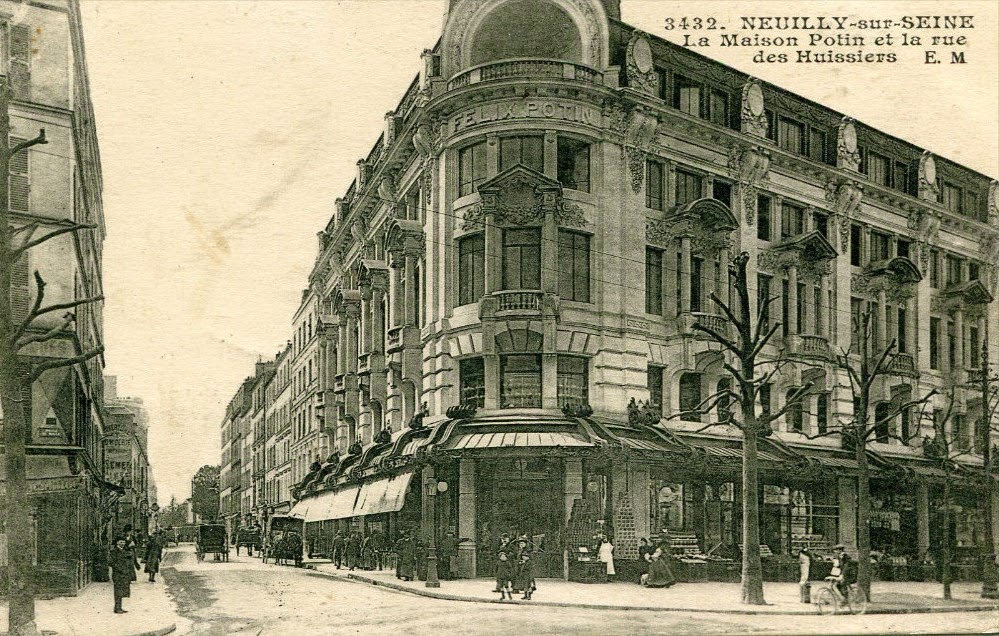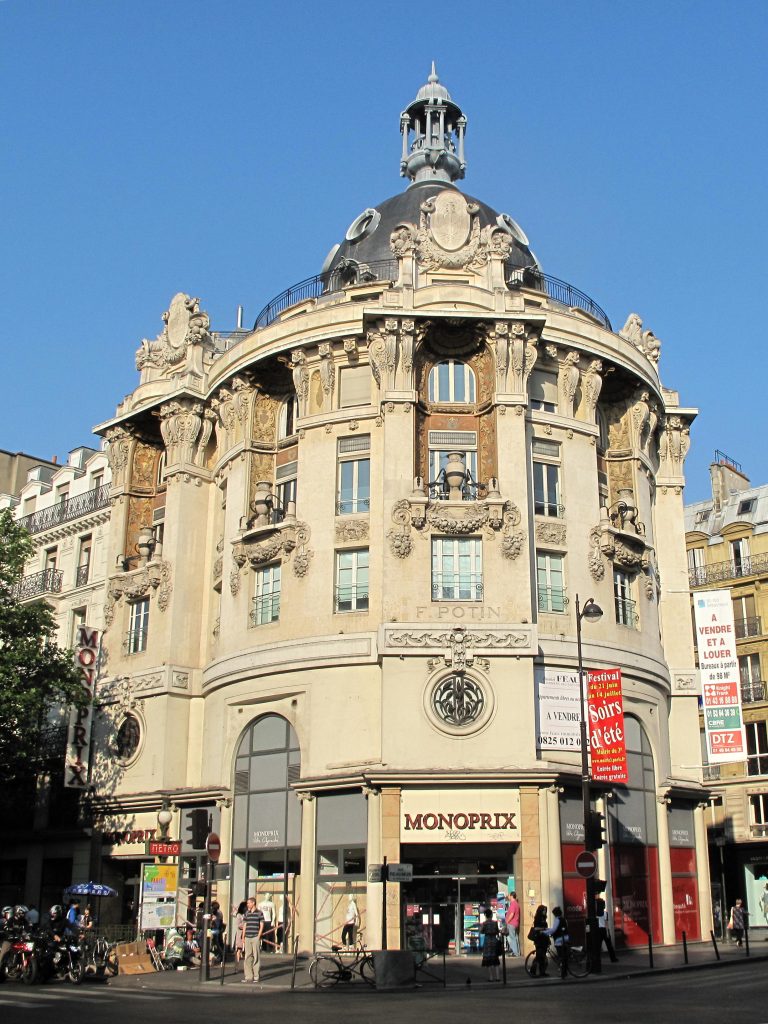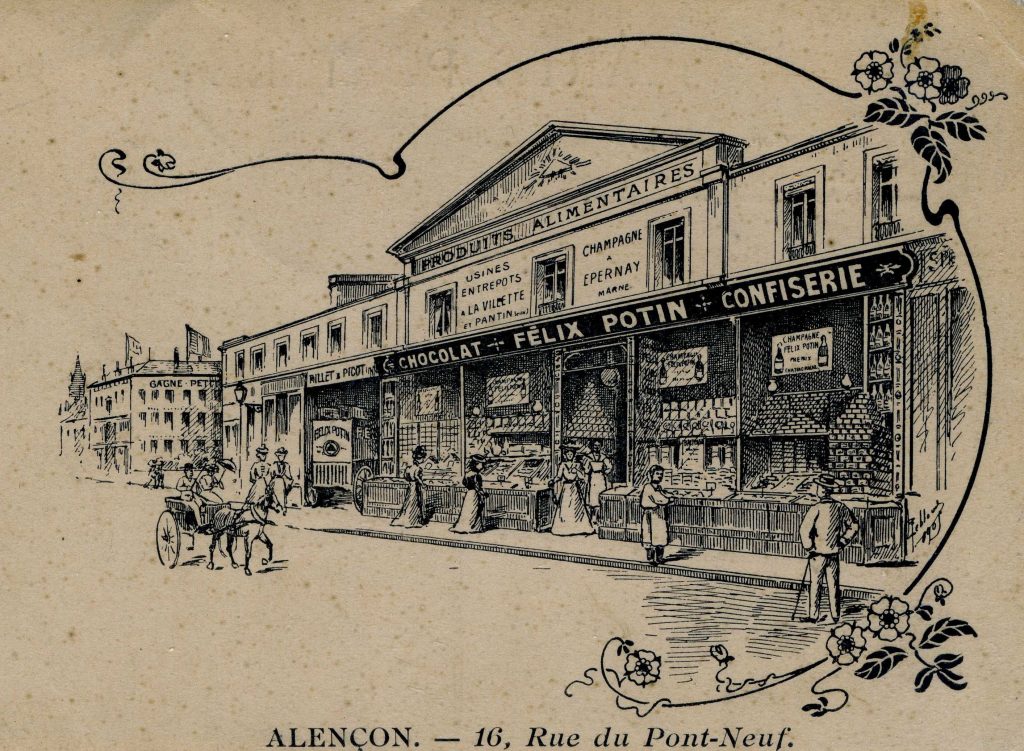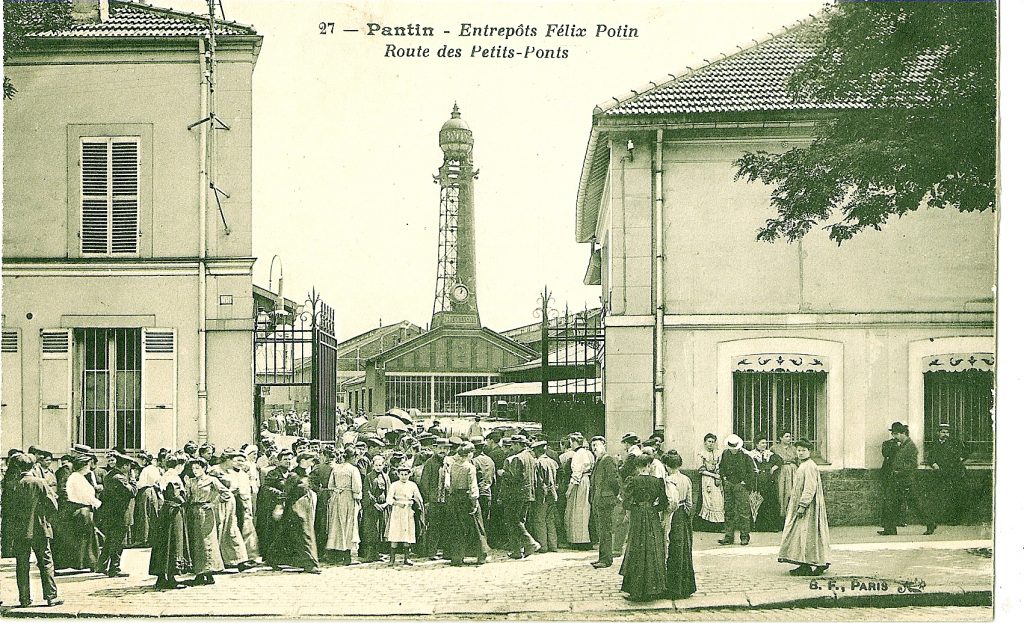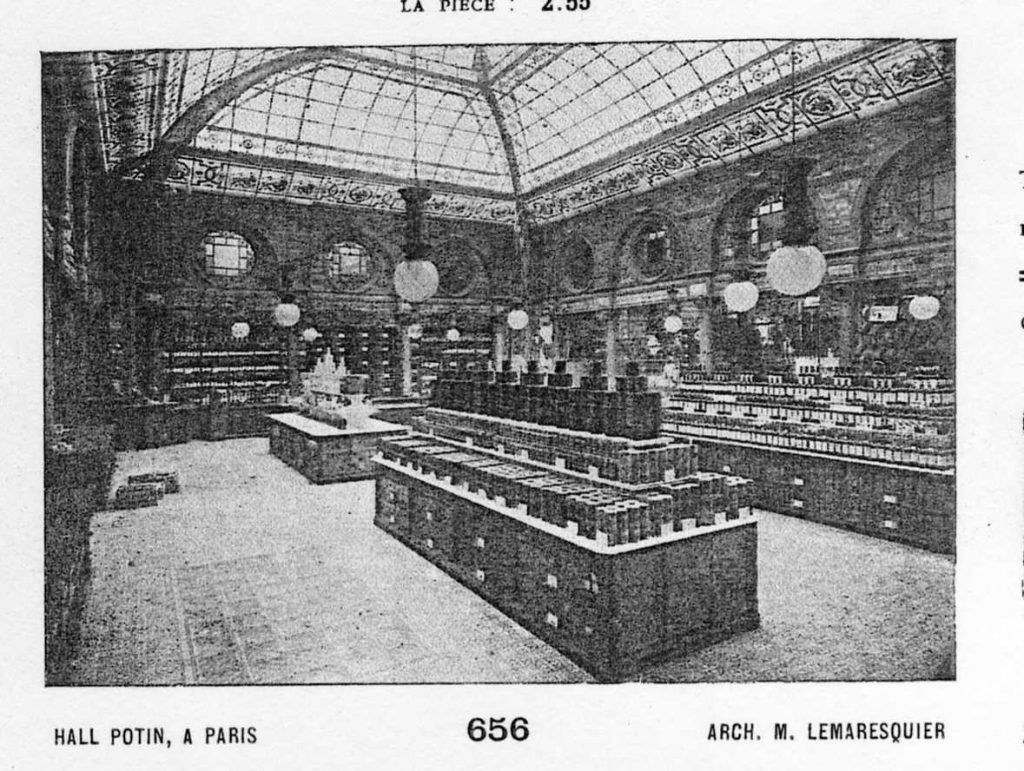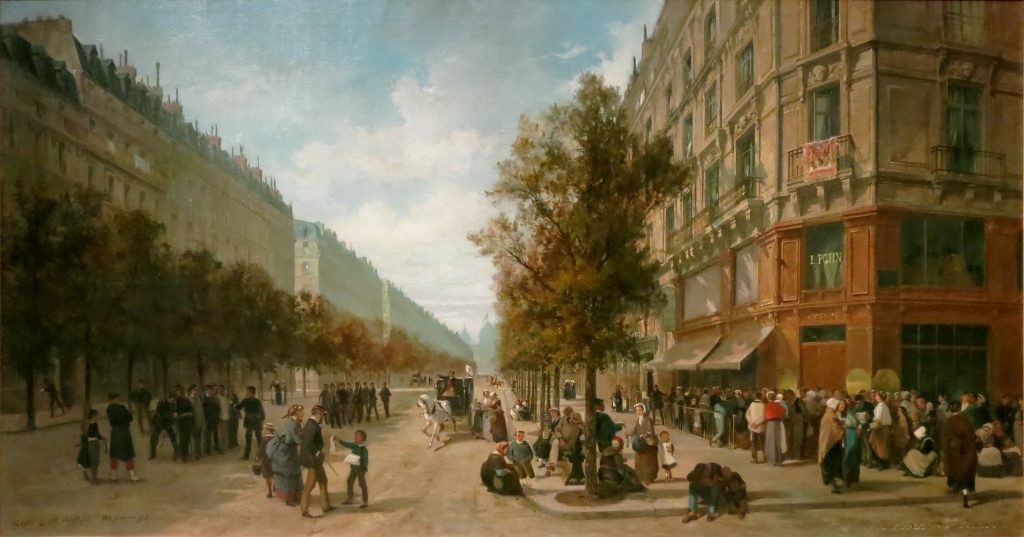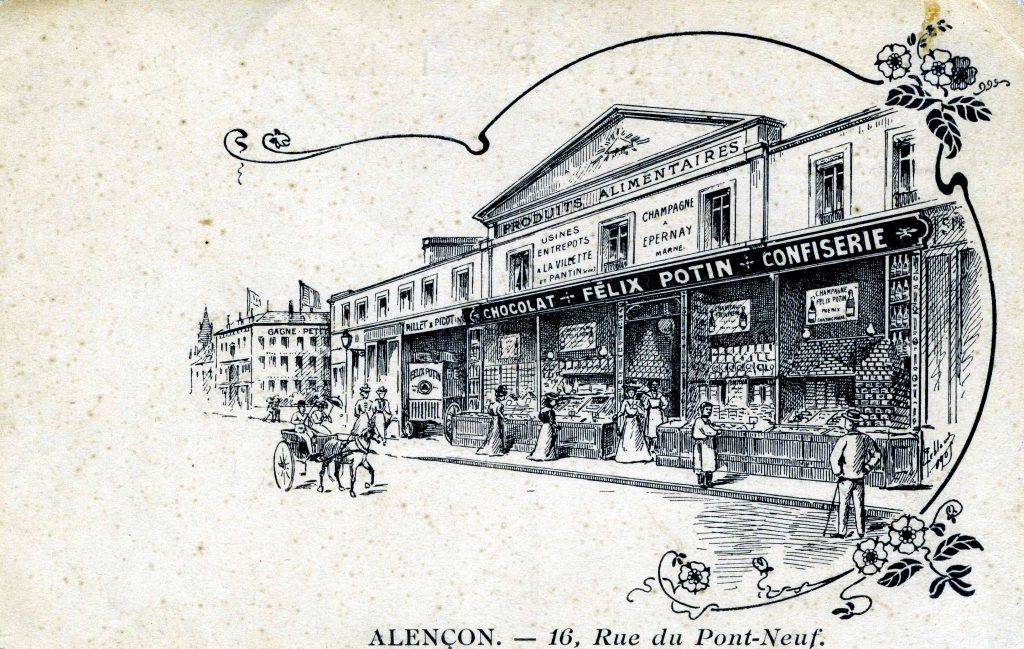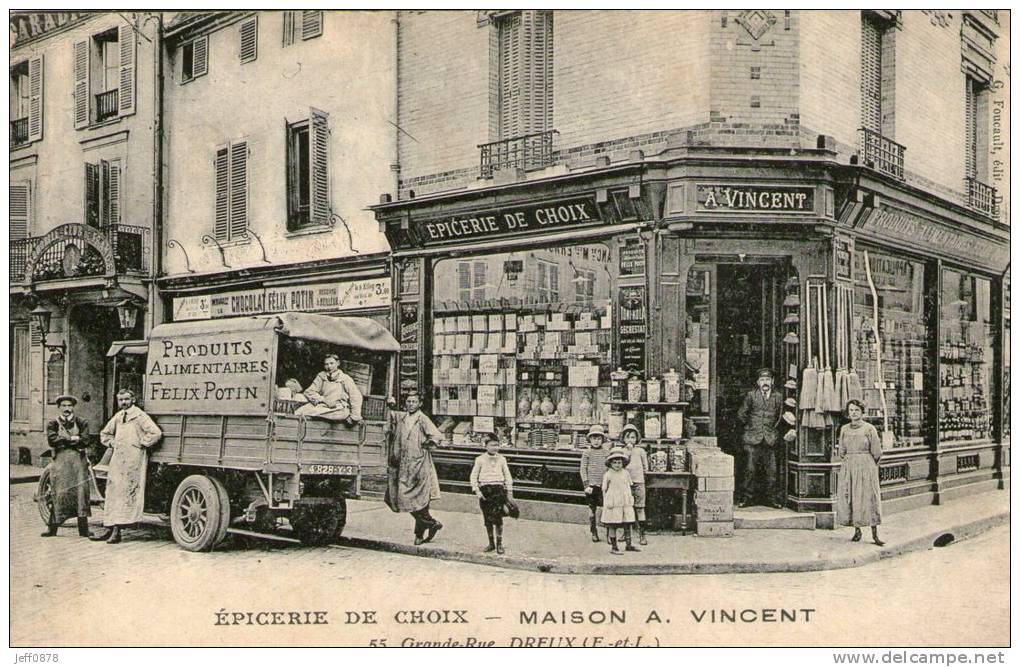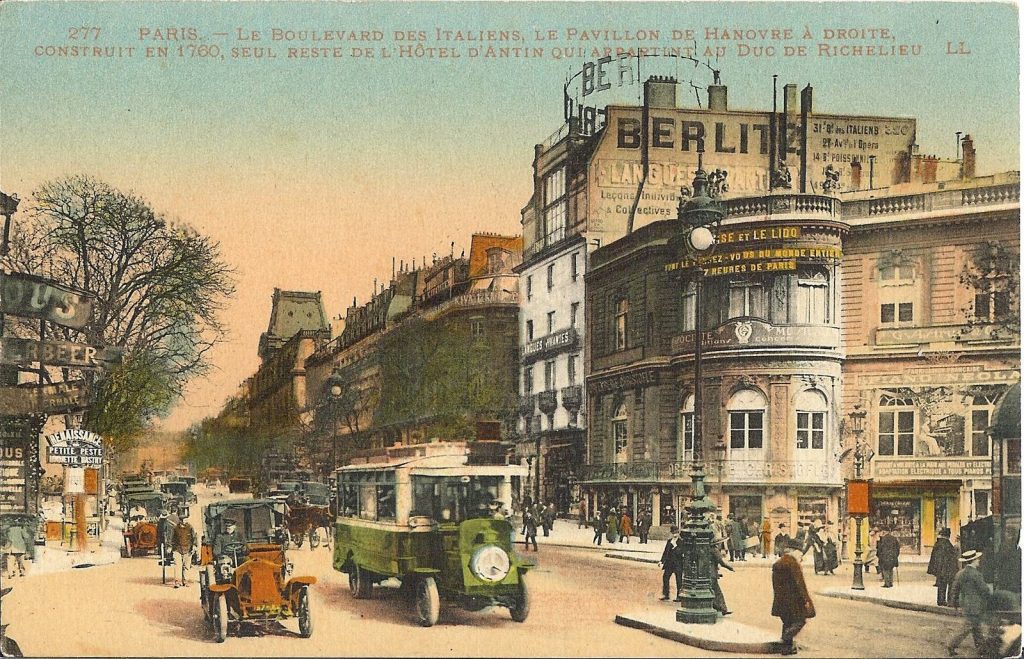Felix Potin Building

Introduction

Felix Potin (1820-1871) is the name of a French trader who created a grocery business that will put the same name. Having worked as a shopkeeper and has gained practical in different stores, Potin decided to buy his first shop in 1844, with only 24 years. He settled in number 28 of the Rue Neuve-Coquenard a daily frequented by Parisian street. Potin, as did the first department stores adopted the new business model, showing the products with their prices. With this new business approach some commodities generated economic losses but these were offset by selling more luxury items, such as cocoa or sweets.
To improve your business intermediaries Felix Potin reduced manufacturing and product distribution by opening its own factories. They were positioned near Bassin de La Villette. Thereafter the entrepreneurial Potin was also interested in manufacturing and other innovations of the time as the canning of food.
Unlike other stores, where the product is weighed, was packaged and sold to the customer in your store products were already prepared for sale, the price marked and labeled with the logo of the company.
Potin entrepreneurial adventure coincided with the changes in Paris carried out by Haussmann. Potin decided to make the most of them so he chose a good area for its establishment, a solar near the new railway station of Saint Lazare. As a result their products came not only Parisians but also visitors coming to the city.
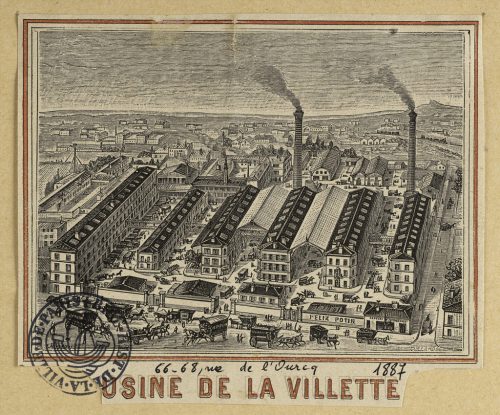
Potin opened its second retail store at number 6 Rue du Rocher in Paris. In 1860 he gave his brother and opened another store at the corner of Boulevard de Sebastopol and Rue Reaumur. This time also chose a strategic location, situated in the center of the “square of Paris “, at the junction of the Halles and Gare de l’Est. Potin in 1961 opened a factory in La Villette, while it was setting up their businesses in different boulevards Paris. Both shops as run by his brother were growing and the latter moved his number 47 Boulevard Malesherbes.
The company prospered and expanded throughout the 1860s, becoming the most famous food brand in the city. From 1870 they began to distribute goods at home. Delivery trucks also did propaganda work each day across the city. So successful had to raise envy, because in 1870 they began to circulate rumors about Felix Potin and was said even committed suicide to avoid possible prosecution. However these rumors were false, since Potin played a role very generous with the citizens of Paris during the siege of the city, not yielding to speculation and keeping prices of basic foodstuffs. Potin died in 1871 leaving behind successful food stores bearing his name.
After his death, his wife, their three sons and their sons continued with the company and opened new stores and two new factories, one in Pantin and one in Saint-Denis. After the First World War became the franchise stores and the company became a corporation in 1924. In 1945 he died Felix Potin’s grandson, Jean Potin, in an accident and the company at the hands of his wife. At this time it appeared the great competition of Felix Potin, supermarkets.
Throughout most of its history Felix Potin has been a family business. Until 1950 his family continued to develop and expand the company. In 1958 André Mentzelopoulos bought the company but to his death in 1980, the competition was too strong and his heirs sold the company which was already in deficit.
In 1984 the Moroccan businessman Daniel Amar bought the company. It continued to lose money and ended up in the hands of the company Saudi Ghaith Pharaon. In 1988 the main settlements Promodès bought Felix Potin, in total 150. The remaining 800 were bought by the Castel Group. They tried to revive the brand but eventually sold the brothers Louis and Fabien Sayer. The company went bankrupt and was liquidated in 1995. In 1996 Promodès took many of the stores and some other Fanprix. Finally, in 2004, Felix Potin brand was bought by Philip Potin company, a distribution network that relaunches the brand and operates in southeastern France.
Brief history:
- 1820: Born Felix Potin
- 1844: Potin opens its first store at 28 Rue Coquenard.
- 1860: Potin gave the store Rue du Rocher and his brother opened the store on Boulevard de Sebastopol.
- 1861: Potin build its first factory in La Villette, north of Paris.
- 1864: Opening of the store on Boulevard Malesherbes.
- 1870: Potin launches home delivery service.
- 1871: Death of founder Felix Potin.
- 1880: Opening of a second factory.
- 1904: Opening of the shop in the Rue de Rennes.
- 1923: Felix Potin already has 70 stores, 10 factories, five warehouses and 650 horses.
- 1956: The company enters decay.
- 1958: Felix Potin is bought by entrepreneur André Mentzelopoulos, French and Greek origin.
- 1984: Daniel Amar bought the company.
- 1988: 150 establishments Promodès Felix Potin purchase. The Castel Group buys others.
- 1995: The company goes bankrupt.
- 1996: After a mismanaged the business collapses and closes in 1996. Some of their stores are bought by Promodès.
- 2003: Philip Potin acquires the rights to use the brand name in the distribution southeastern France.
Location
Felix Potin The main building is located at 140 Rue de Rennes in Paris, France. It is located on the corner of Rue Blaise Desgoffe in the sixth district of the city. The nearest metro station is Saint-Placide, line 4. Nearby are the Luxembourg Gardens and the Gare de Montparnasse.
Another important buildings in Paris Felix Potin at number 103 Boulevard Sebastopol. This sets up the corner of a block defined by the Rue Reaumur, Rue de Palestro, Rue Greneta and the Boulevard de Sebastopol streets. It is located in the second district Paris, near Les Halles and the Pompidou Center. The nearest metro station is Réaumur-Sébastopol lines 3 and 4.
Concept
The first stores opened Felix Potin were modeled on the architecture of the nineteenth century department stores. Potin adopted the new business model, indicating prices and even manufacturándolos products in its own factories. All packages were labeled with the company name. This propaganda strategy also applied to cars and car sharing and even in architecture, showing the company name at the top of the building on the Rue de Rennes or the facade of the Boulevard Sebastopol, for example.
Several of Felix Potin buildings were designed by the architect Paul Auscher (1866-1932). Auscher had already designed other commercial spaces before, the new galleries in Bordeaux (1894) and new galleries in Mans (1899- 1905). As for Felix Potin shops, Auscher in 1899 built the store of the Rue du Faubourg-Saint-Antoine in 1904 and the Rue de Rennes, home now a Monoprix and Zara respectively. Auscher, disciple of architect Julien Gaudet, he works in a modernist style and then evolve towards a more personal style.
Spaces
The main buildings in Felix Potin Paris are:
- 1864, Felix Potin, number 47 Boulevard Malesherbes, M. Lemaresquier
- 1899: Felix Potin, number 99 of the Rue du Faubourg Saint-Antoine, Paul Auscher (1866-1932).
- 1904: Felix Potin, number 140 of the Rue de Rennes, Paul Auscher (1866-1932).
- 1910: Felix Potin, number 103 Boulevard Sebastopol, Charles Lemaresquier (1870-1972).
Boulevard Malesherbes
Felix Potin Boulevard Malesherbes building was designed in 1864 by Lemaresquier. One of his points was the most characteristic modernist glass dome illuminated the interior of the store. The iron structure of modernist aesthetic is added to the highly decorated walls and wooden furniture where the products are exposed.
Rue du Faubourg-Saint-Antoine
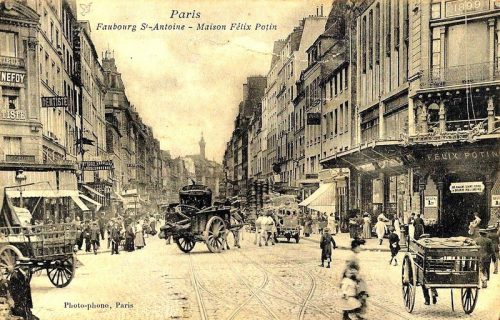
This building was designed by architect Paul Auscher in 1899. The seven floors of the building are topped by a tower at the corner of the block, which houses a clock. The building of stone and metal cover has a rather sober look. The most notable detail of the facade are in the corner where the iron structure in the windows of the main plants on display. On one side of these is the inscription that recalls the architect and the date of the building. A decoration in the corner iron is added in a series of marquees origin covering entries establishment. Today this third dimension of the facade is no longer, causing it to be much flatter.
Rue de Rennes
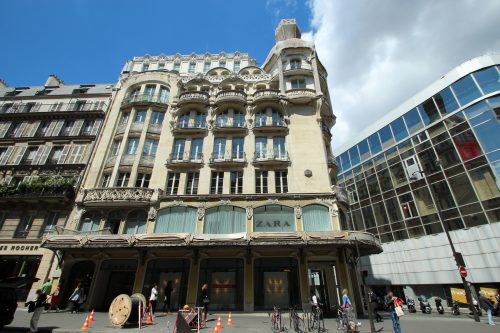
The interior decor of this building is no longer the original, but its exterior is preserved as it was designed for Paul Auscher in 1899. On the facade different golden mosaics where you can read the name are some of the products that the store sold: tea, cakes, biscuits, chocolate, sweets, coffee, cocoa, perfume, etc. The corner of the building is crowned by a concrete tower where the company name is displayed in gold letters on a black background. The eight-storey building has a monumental high aspect that highlights the balconies of the upper floors and the canopy separating the ground floor from the rest of the construction. The building has a reinforced concrete structure, now houses one of the shops clothing chain Zara.
Boulevard Sebastopol
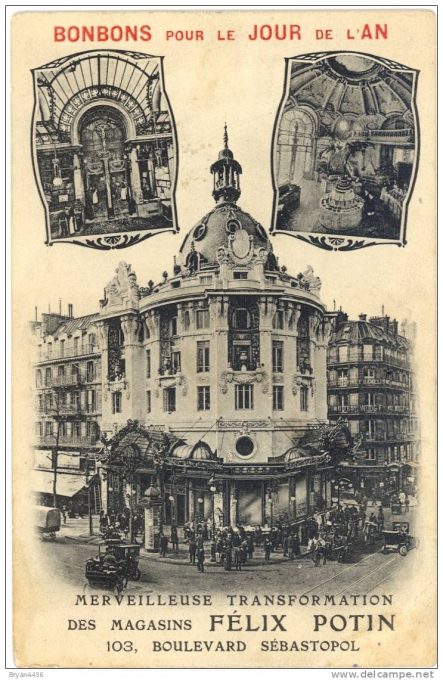
This building was designed in 1910 by Charles Lemaresquier, defining a block that previously housed the Hopital de la Trinite, founded in the twelfth century and destroyed in the eighteenth century. The architect Victor Laloux was a disciple and was inspired by traditional architecture to create this neo-baroque design. The roundabout has decorative details related to trade and consumption, as the cornucopia, fruit garlands, vases and natural details. The building structure is reinforced concrete, a modern material that is used in this case in architecture, antique look. In the six-storey building also highlight the recessed window openings of the third and fourth floors acquiring more depth to be decorated with dark maroon paint. It also highlights the inscription “F. Potin “the center of the facade. Entries initially had a more majestic canopies added to the set. Unfortunately today they are no longer. The building’s interior was also quite spectacular. Modeled after the department stores of the nineteenth century, this property also had the appearance of being a palace for trade, where every detail of the decor was designed to create a harmonious whole. Marble columns were added to coffered ceilings, ornamental lamps, paintings and garlands, to create a luxurious setting to display the goods. Today the building houses a Monoprix store.
Structure and Materials
These buildings, while having an antique look that goes from a somewhat baroque to a modernist style, using modern concrete or steel structures. In the decoration of its interior and exterior use all kinds of materials, from stone and marble, mosaics and paintings to, not to mention the decor in the metal structure itself or in details like railings and lamps.
Video
